The train was full. N- and I sat across from each other at a table, both at the window seats. Another couple sat beside us.
It was early morning, and I fell asleep to the sounds of the train. At one point, I woke up and realized I was leaning on the woman beside me. I apologized; she was gracious. I tried to stay awake.
The train arrived at our destination. N- and I gathered our things and went to the exit. With my purse and suitcase in hand, I stepped onto the platform. The train was too high, the platform too low. I misstepped and stumbled right into a group of people waiting to board.
“Are you okay?” a woman asked, helping me with my suitcase.
I was fine. “I didn’t mind the gap,” I said sheepishly. The bystanders chuckled.
We had arrived in York.
—
The City of York
York is a historic walled city in Yorkshire, England. The city has a rich history dating back to the first millennium AD, going through wars, conquests, and periods of prosperity alike. The city offers a variety of historical attractions, including medieval buildings, Roman and Viking ruins, and Georgian architecture.
Day One
York Castle Museum
After leaving our luggage at the hotel, N- and I started exploring.
Our first stop was York Castle Museum, which was housed in a former debtor’s prison and an adjoining former women’s prison. It also stood where the former York Castle used to be, hence the name.
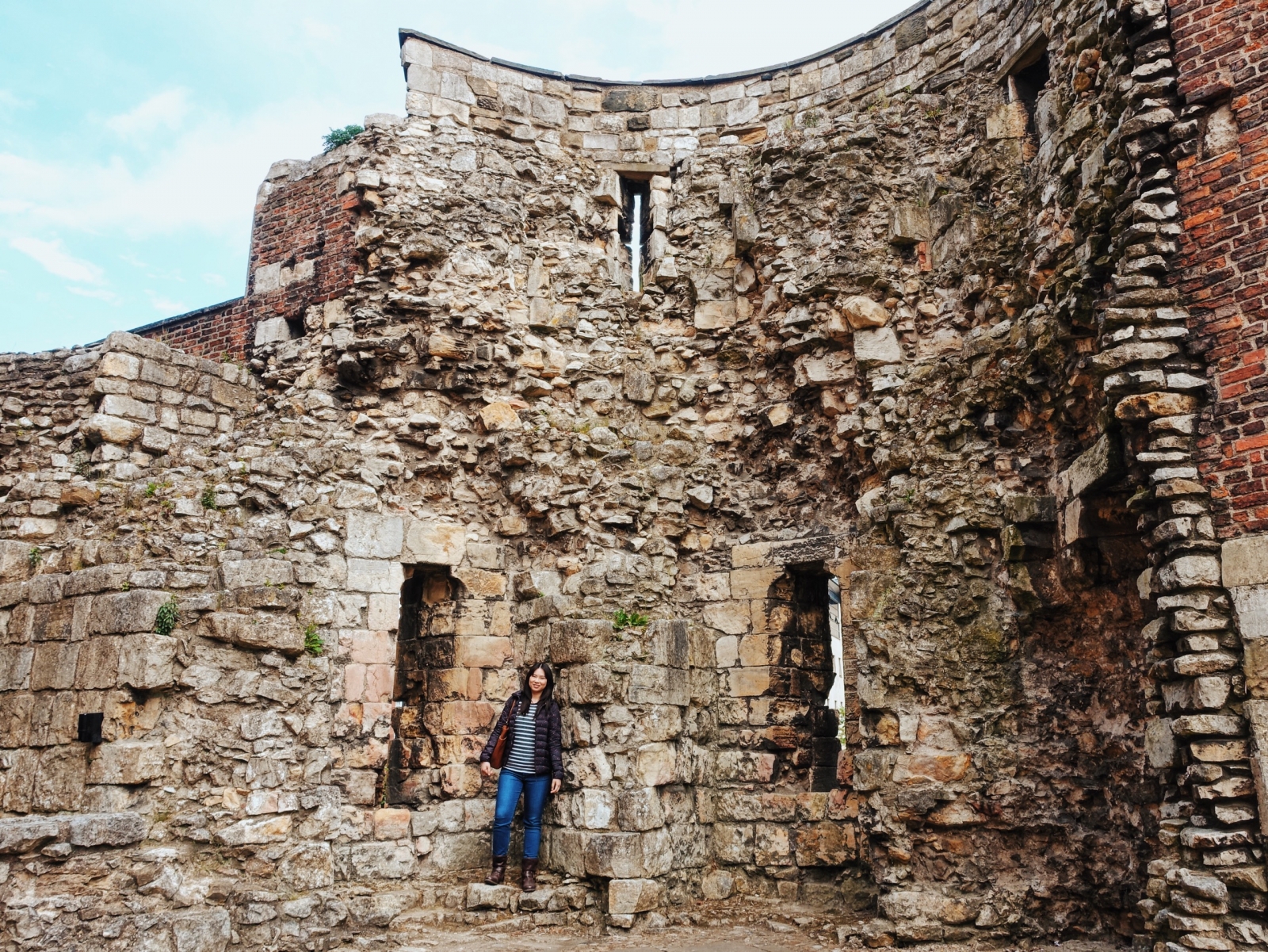
There are three main things to check out here: the exhibits, the Victorian Walk, and York Castle Prison.
Display Exhibits
I thought the display exhibits were just okay. Some of them seemed hastily put together.
The exhibit I found most memorable was From Cradle to Grave, which explored how people have celebrated births, weddings, and deaths throughout history. They featured artifacts from various points in the past centuries: cradles, christening gifts, wedding gowns, trousseau items, mourning clothes, and even a hearse.
Victorian Walk
The real highlight of the museum was the Victorian Walk—a recreation of York in the Victorian era. They definitely didn’t skimp on this one.
Compared with the Victorian Walk at the Museum of London, this one was three times better. For one, it was larger. And although it was an indoor recreation, it was so well-constructed that you felt like you were walking down the cobblestone streets of Victorian York.
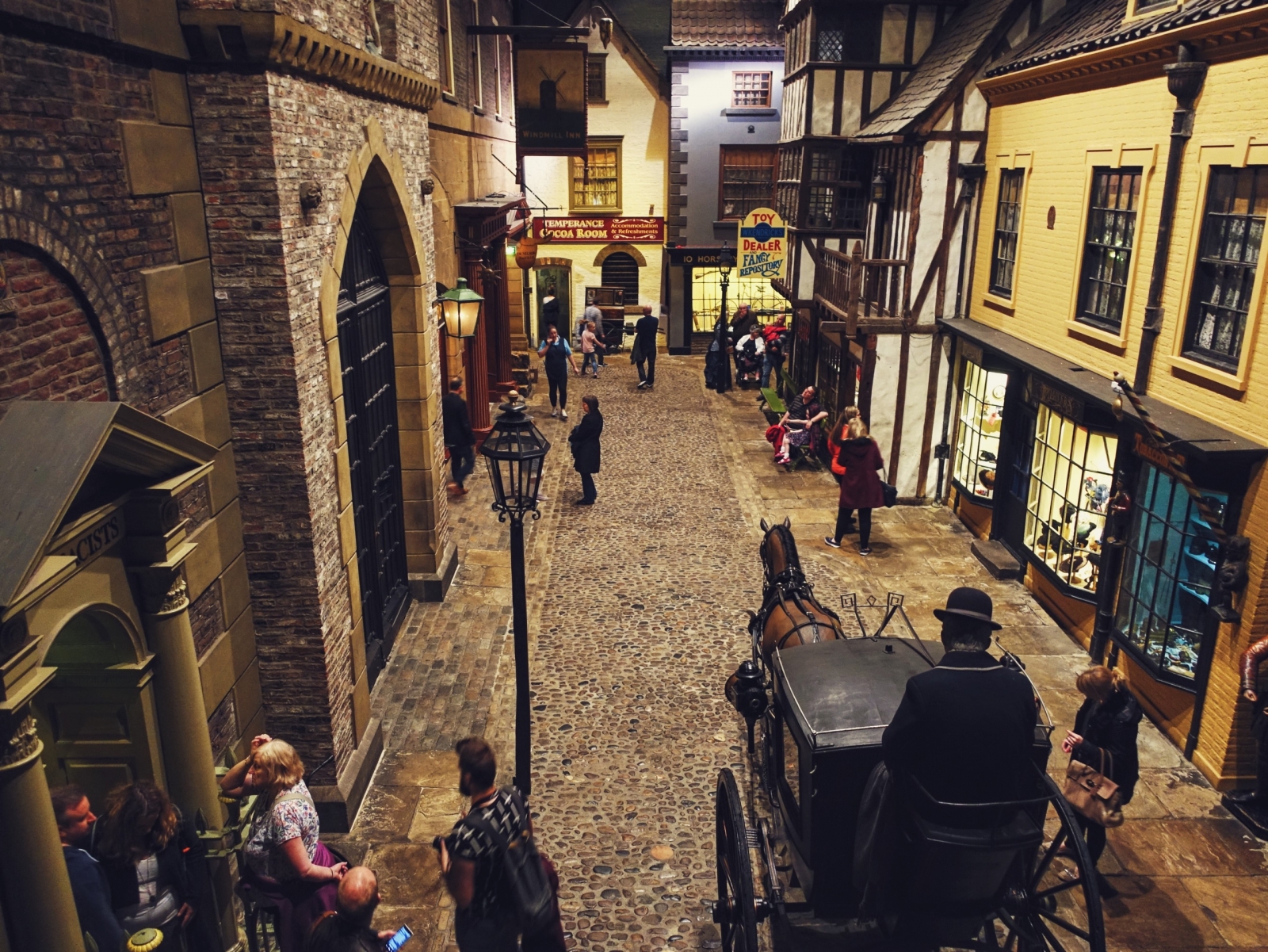
We walked around the shops, offices, and community buildings. There was a schoolroom, a Hansom cab, a police cell. There were carriages and a stable. At the stable, they recreated the bad smells related to horse care. (I’m pretty sure that was on purpose.)
The coolest thing was that every shop on the streets was based on a real business that operated in York between 1870 and 1901.
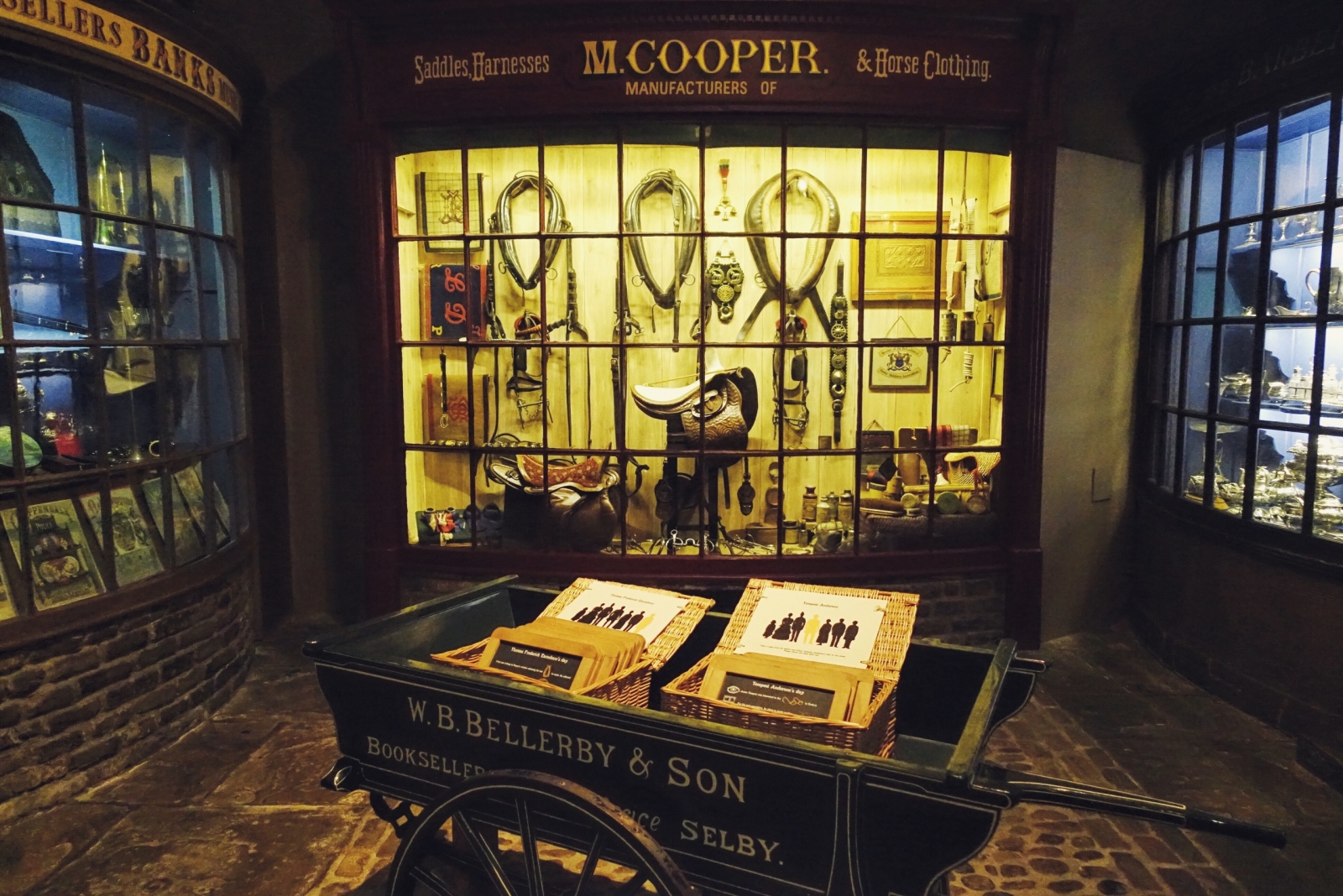

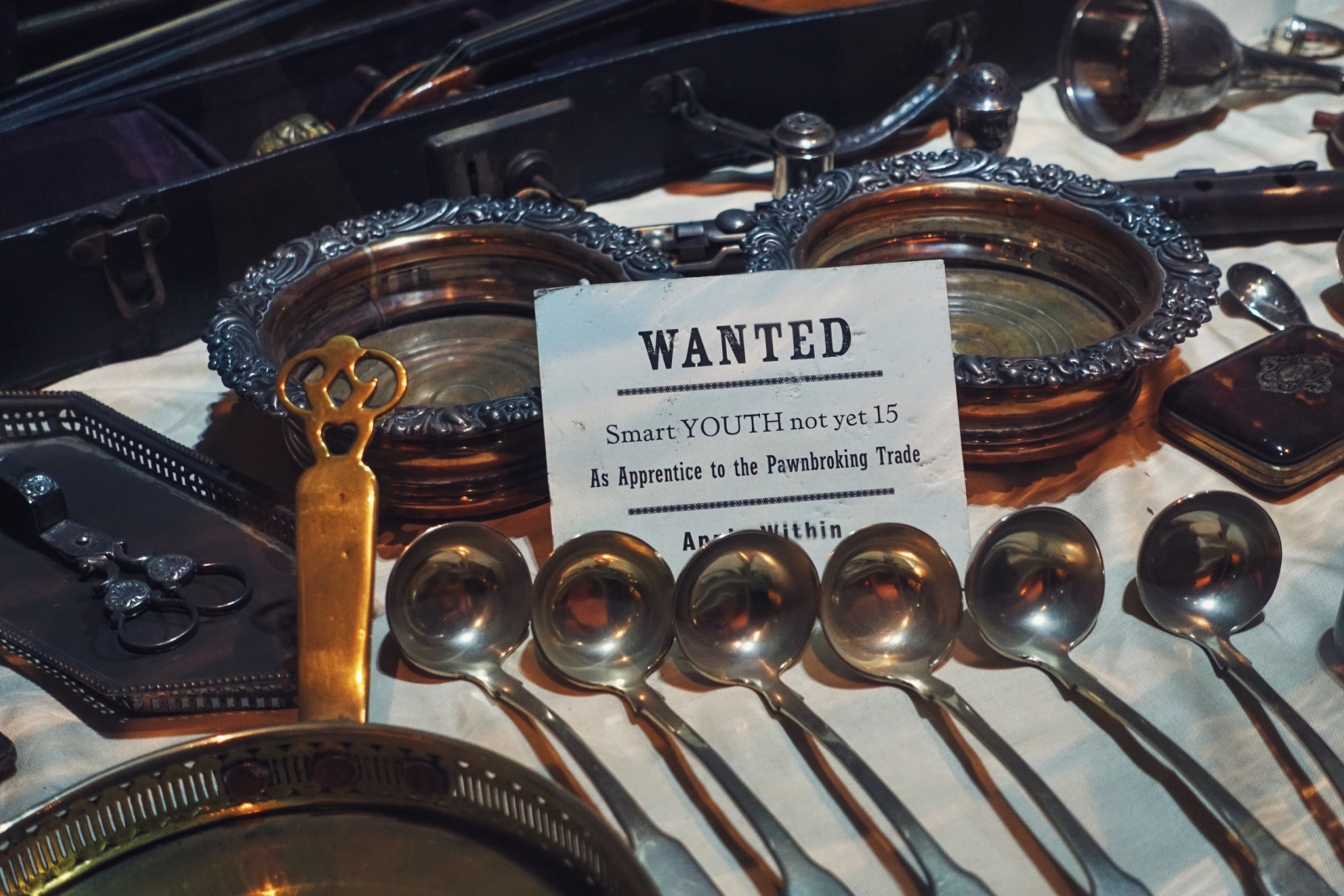

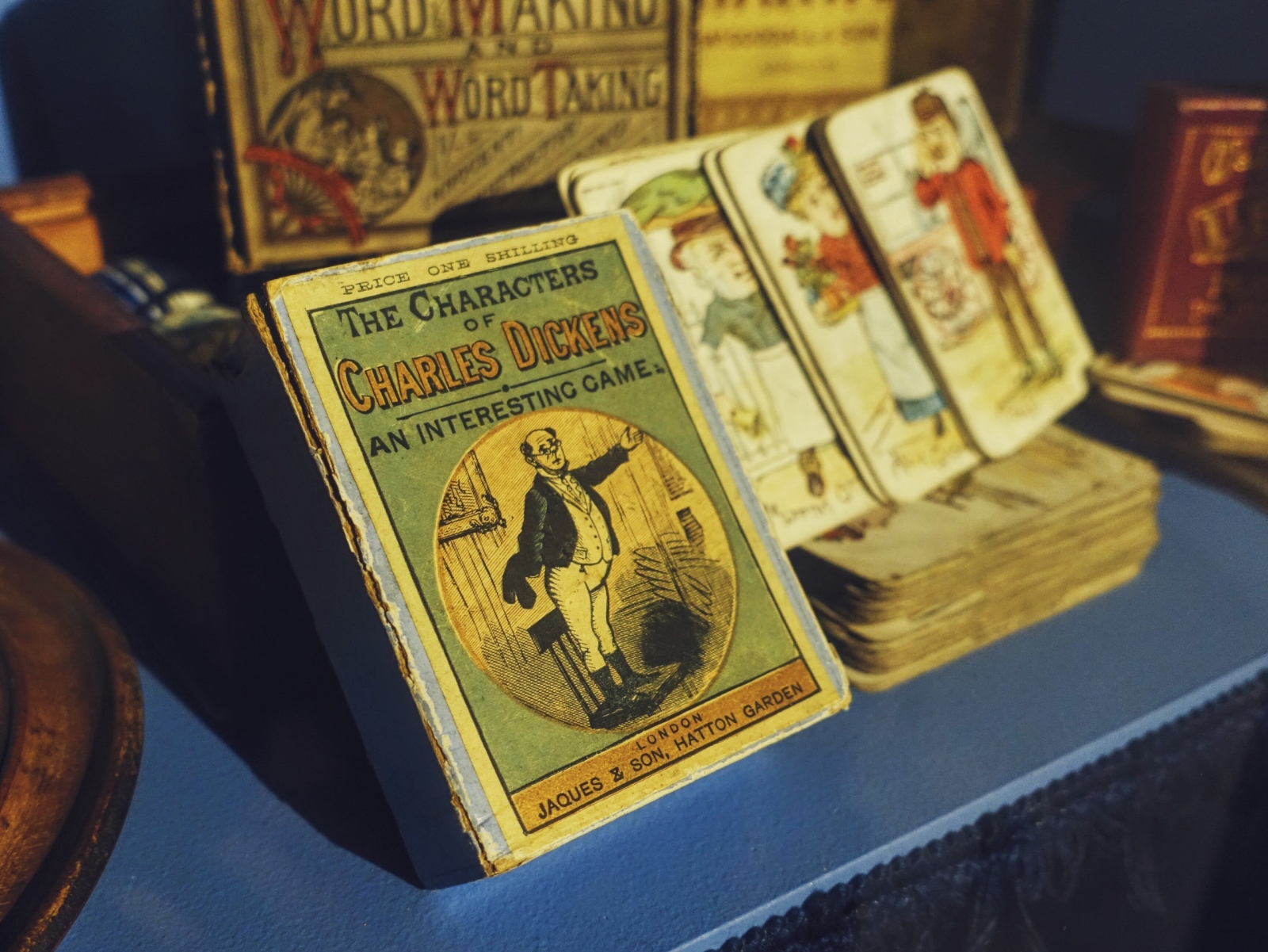

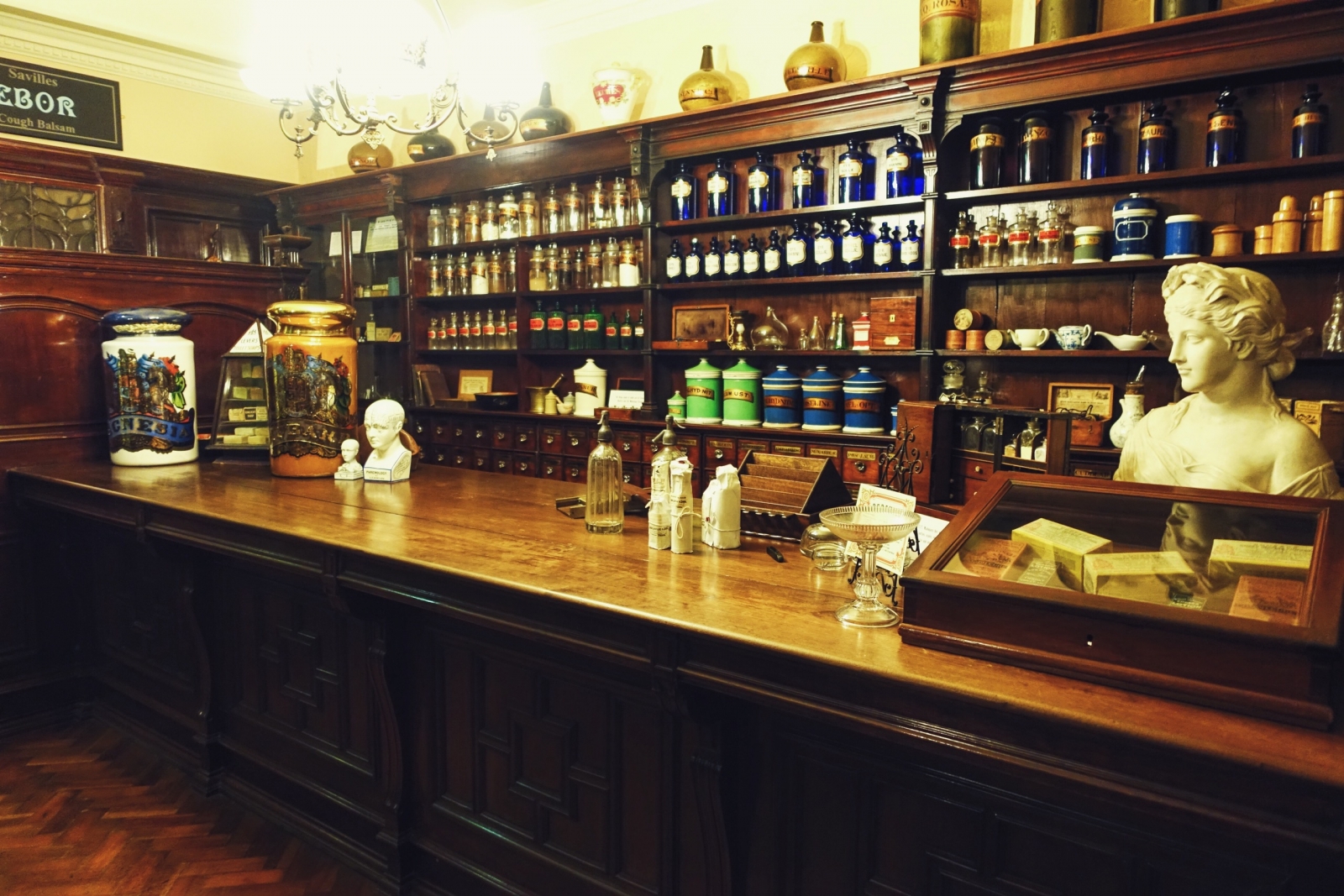

There was a historically accurate public bathroom in an alley. In the toilet, there was a replica of all the poop that would have accumulated there. I shit you not. I didn’t bother taking a picture. (“Ugh, that’s just unnecessary,” one visitor said when his son pointed it out to him.)
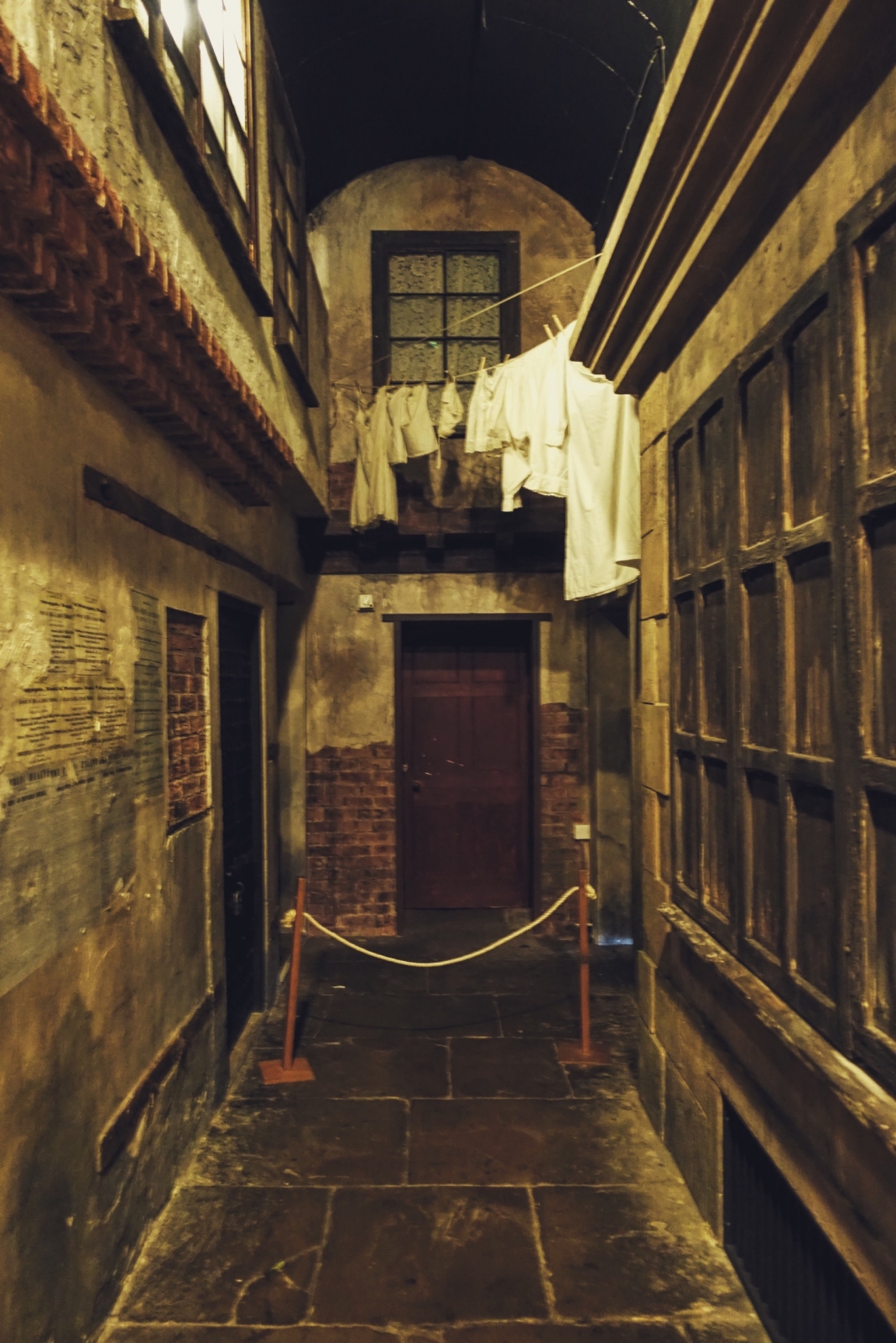
At some point during our walk, it “rained.” There was no actual water, but there were sound effects and the lighting changed. That was a nice touch.
The Victorian Walk was a treasure. I recommend a visit.
York Castle Prison
The museum was housed in 18th century prison buildings—and the York Castle Prison exhibit was located in the actual dark, dank prison cells they used to hold people in.
In each cell, they projected a lifelike video of an inmate that was actually held at the prison. The inmate (played by an actor) talked to the visitors about that they’d done to be placed in prison—and, in many cases, a defense of themselves.
The inmates included the notorious highwayman Dick Turpin; the last woman burnt at the stake in Yorkshire; a man who ended up beaten to death in prison; and someone who went on to live a successful life in Australia.
Lunch at Walmgate Ale House
We had lunch at Walmgate Ale House, which was in a 17th century building. We and two people at another table were the only customers on the second floor, making it a comfortable meal.
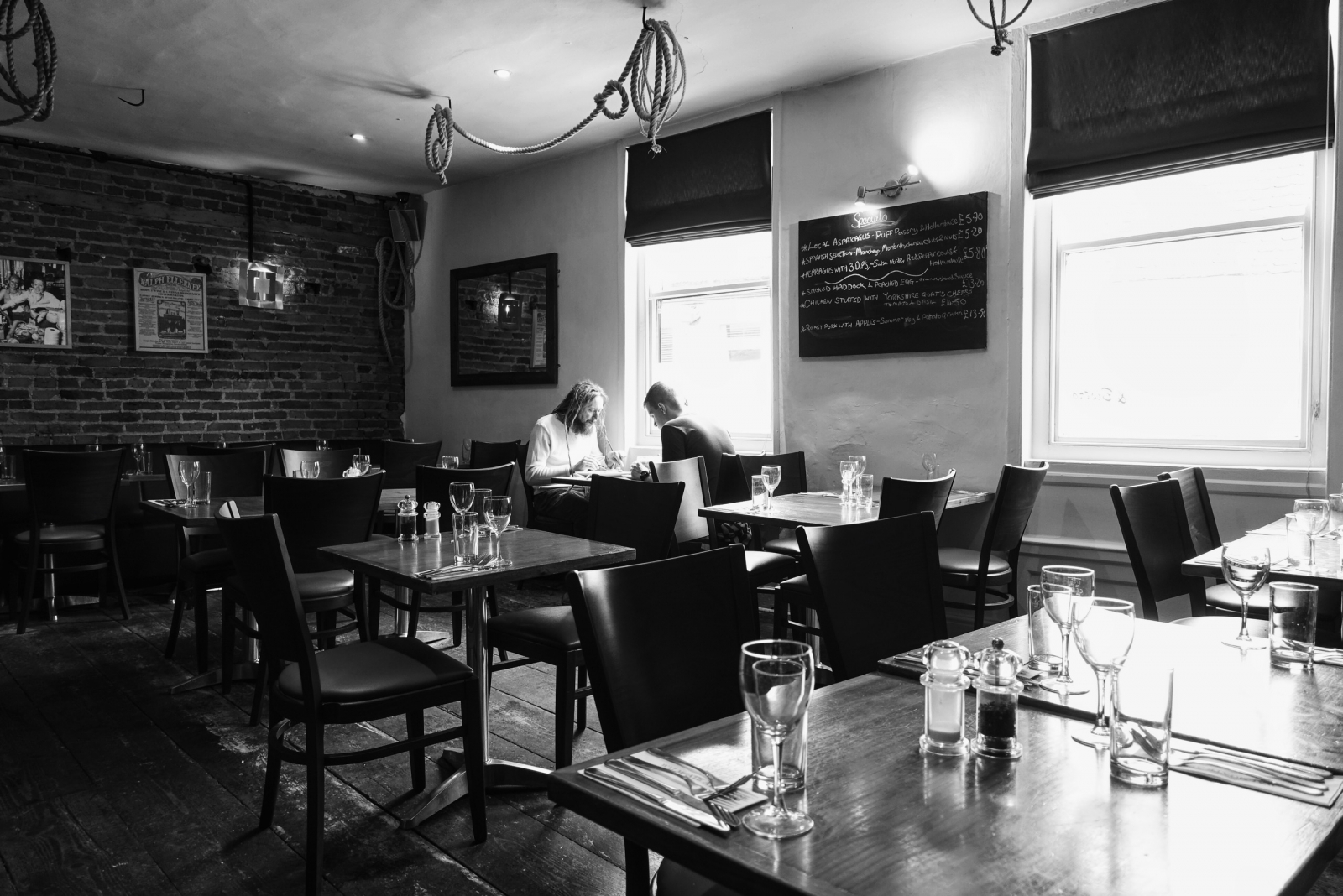
It was here that I first tried a traditional Sunday roast—a meal of roast Yorkshire beef, Yorkshire pudding, roast potatoes, and vegetables. It was delicious.

We also had baked mushrooms, Moroccan chicken breast with couscous, and sticky toffee pudding with vanilla ice cream for dessert.
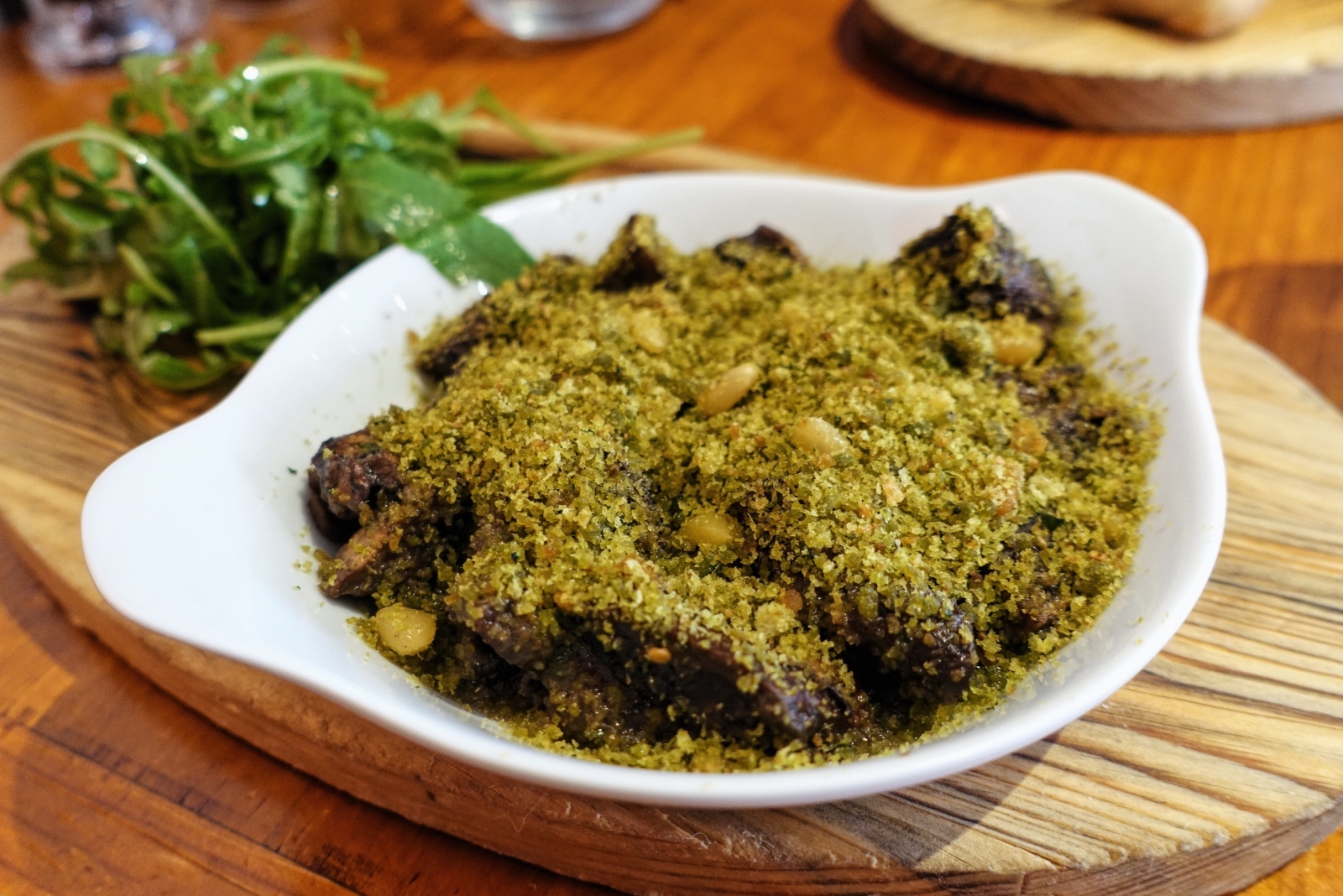


The Shambles
After lunch, we headed to the Shambles, one of the best-preserved medieval streets in the world. Many of the buildings here date back to the late 14th and 15th century.
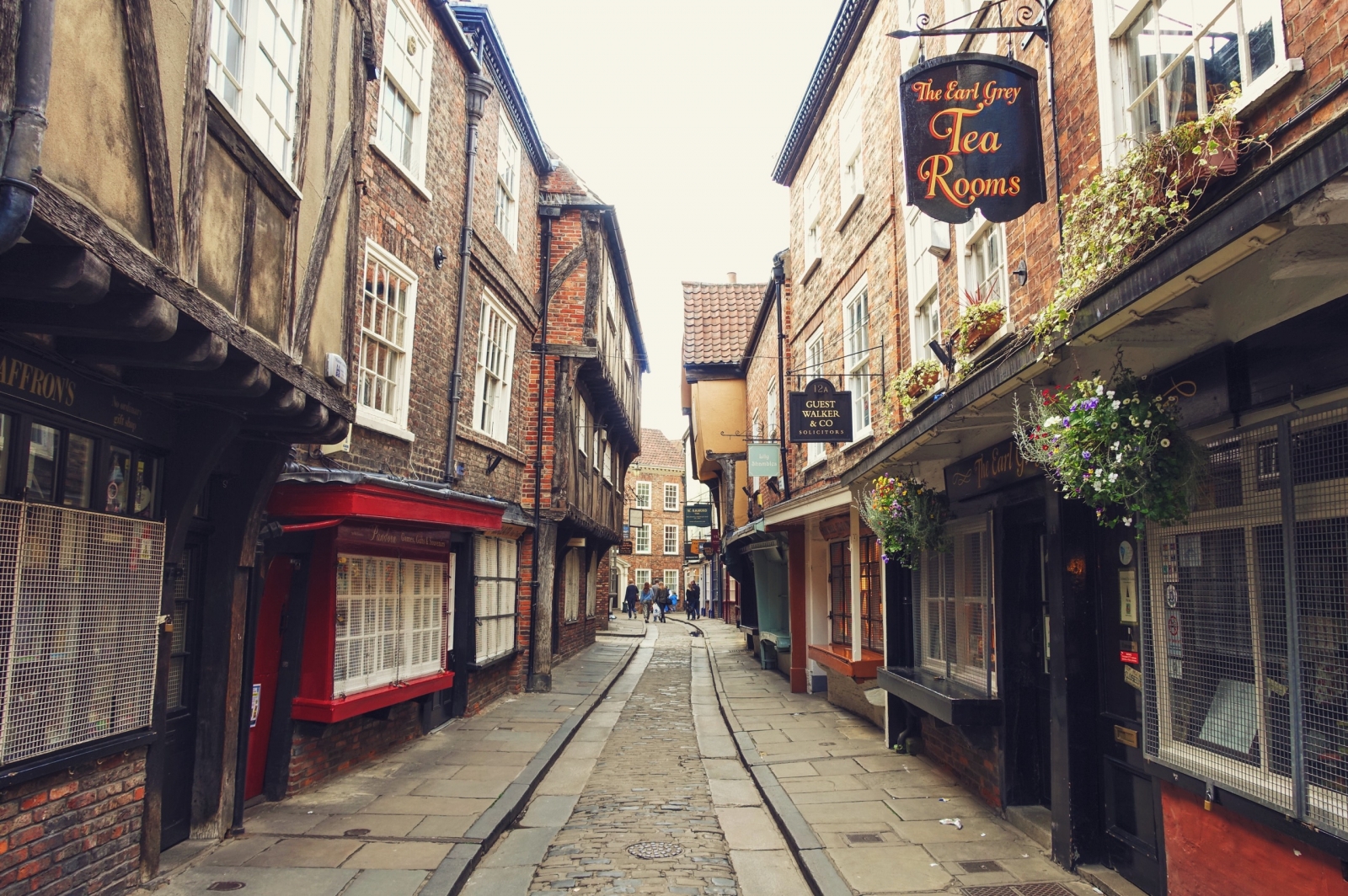
The archaic word shambles means meat market, and the Shambles was originally a street of butcher shops. They hung meat outside the shops and laid them out for sale at the windows. These days, some of the original meat hooks are still attached to the shopfronts.
The street was a narrow, twisting lane—crooked old buildings on a crooked street. If you ever wanted to see a real-life version of Diagon Alley, this would be a good place to go.
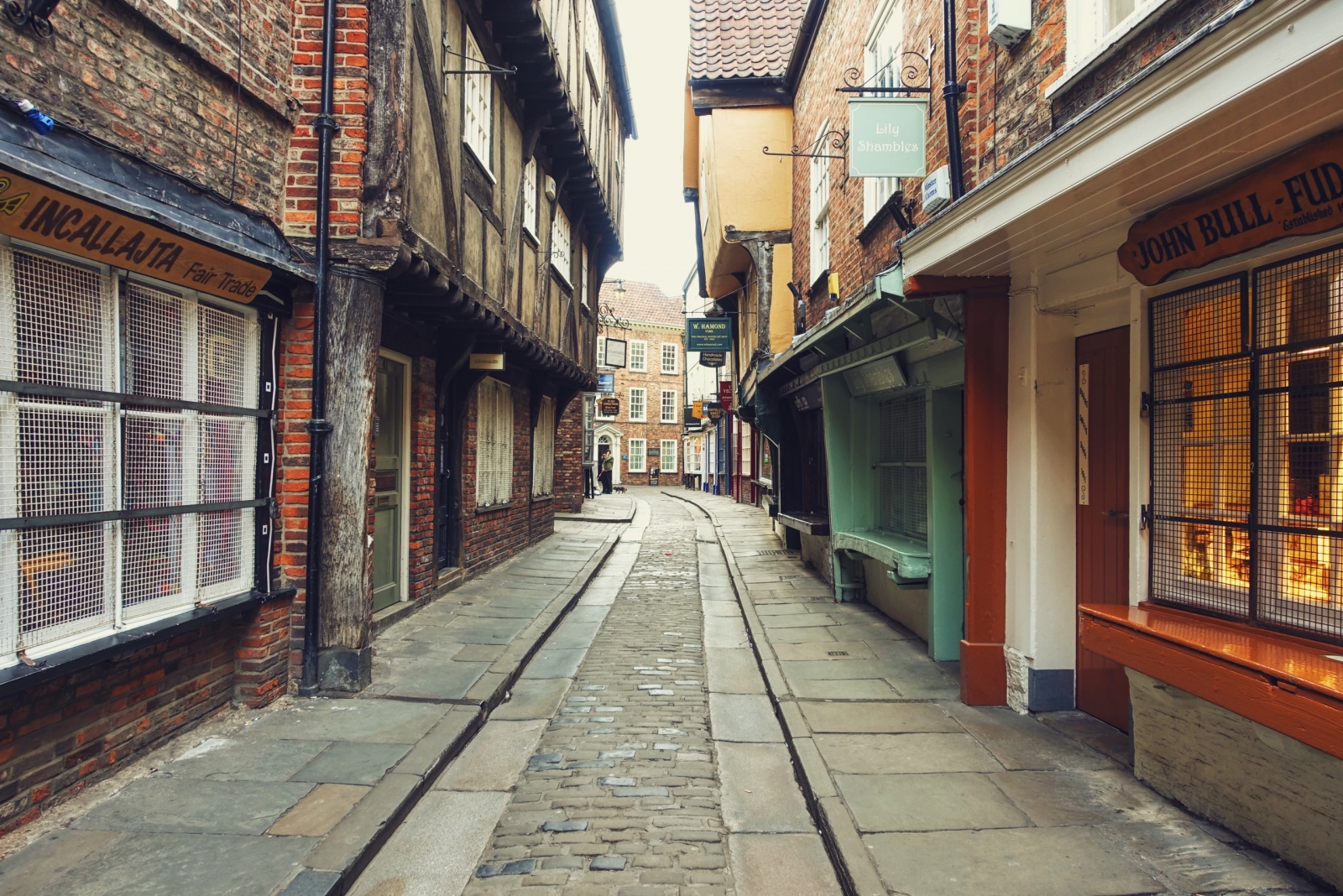
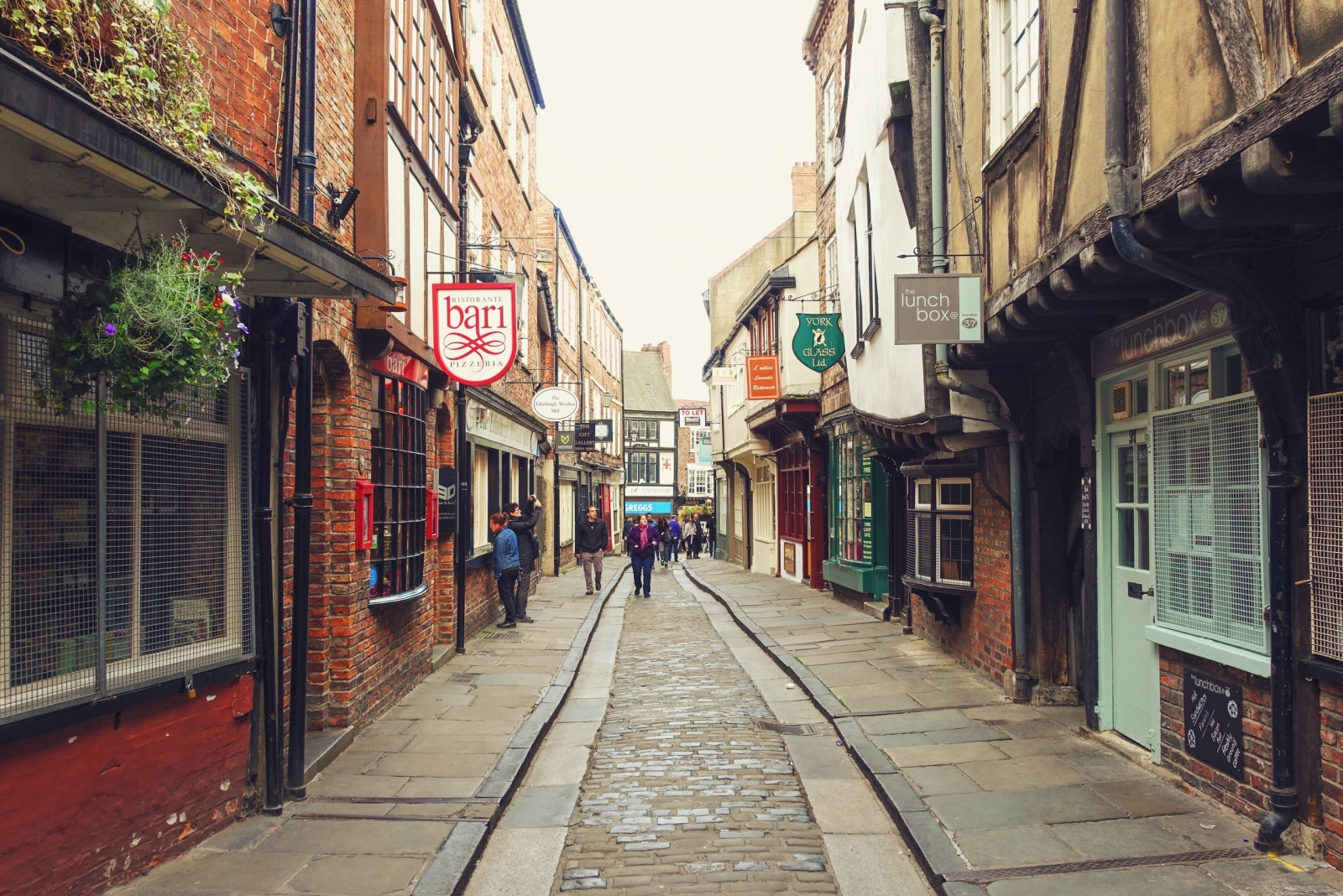
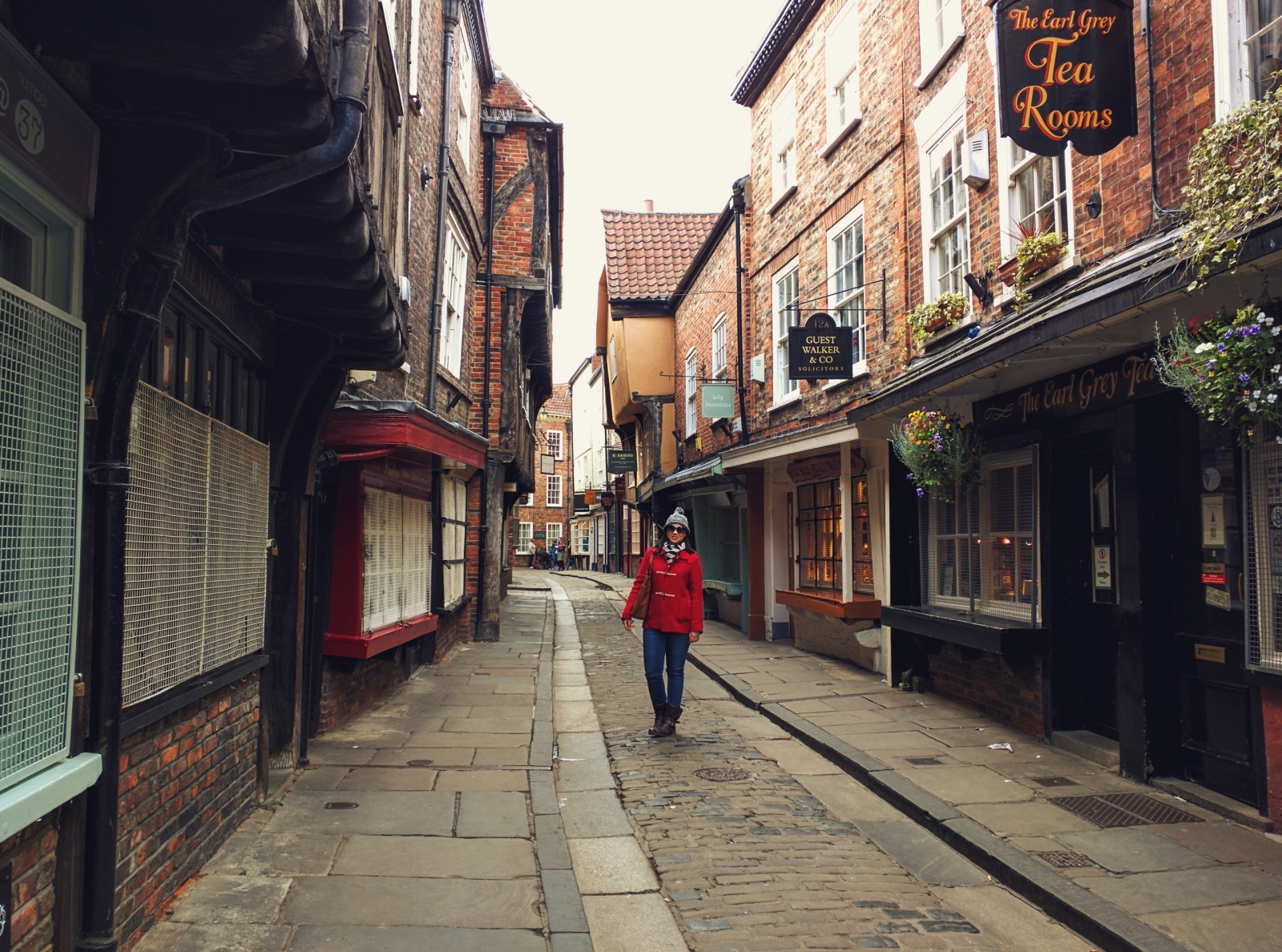
It was a Sunday, and the street was empty. We almost had it all to ourselves.
Throughout the day, we marveled at how calm and uncrowded York was. It was a pleasant reprieve after a week in London, where we jostled with crowds almost everywhere we went. York was empty, but not eerily so. You had the feeling that people were just at home relaxing.
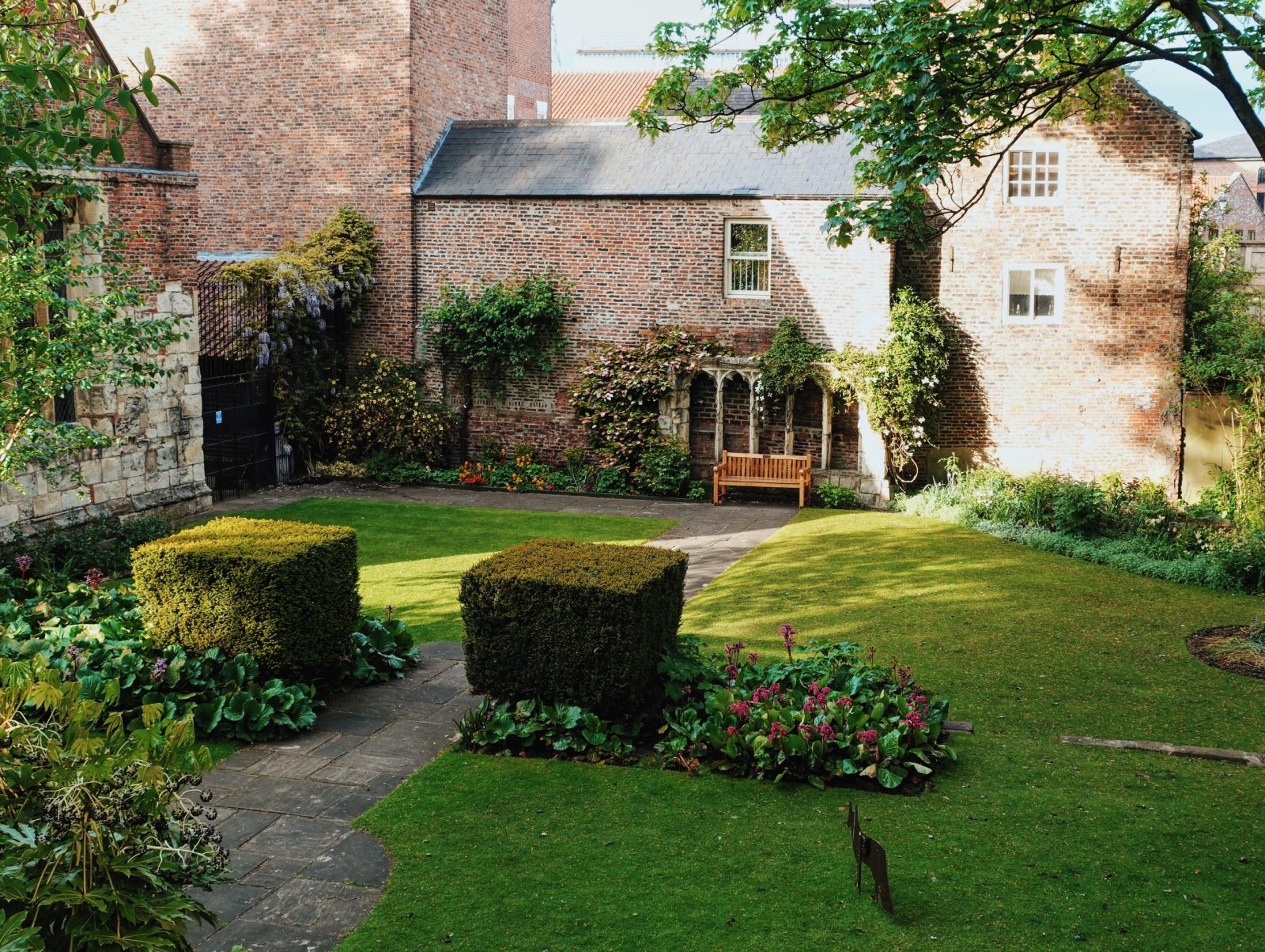
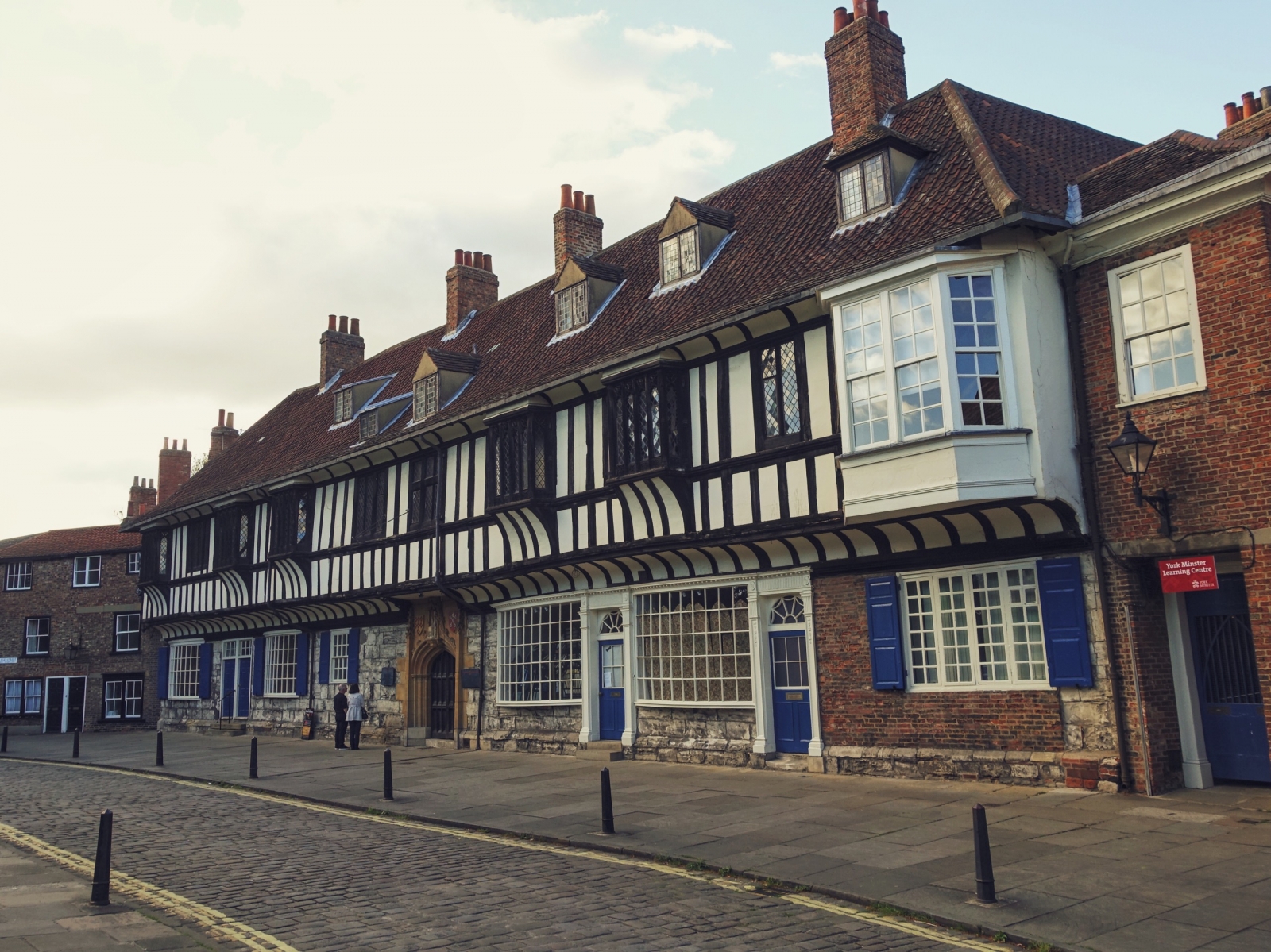
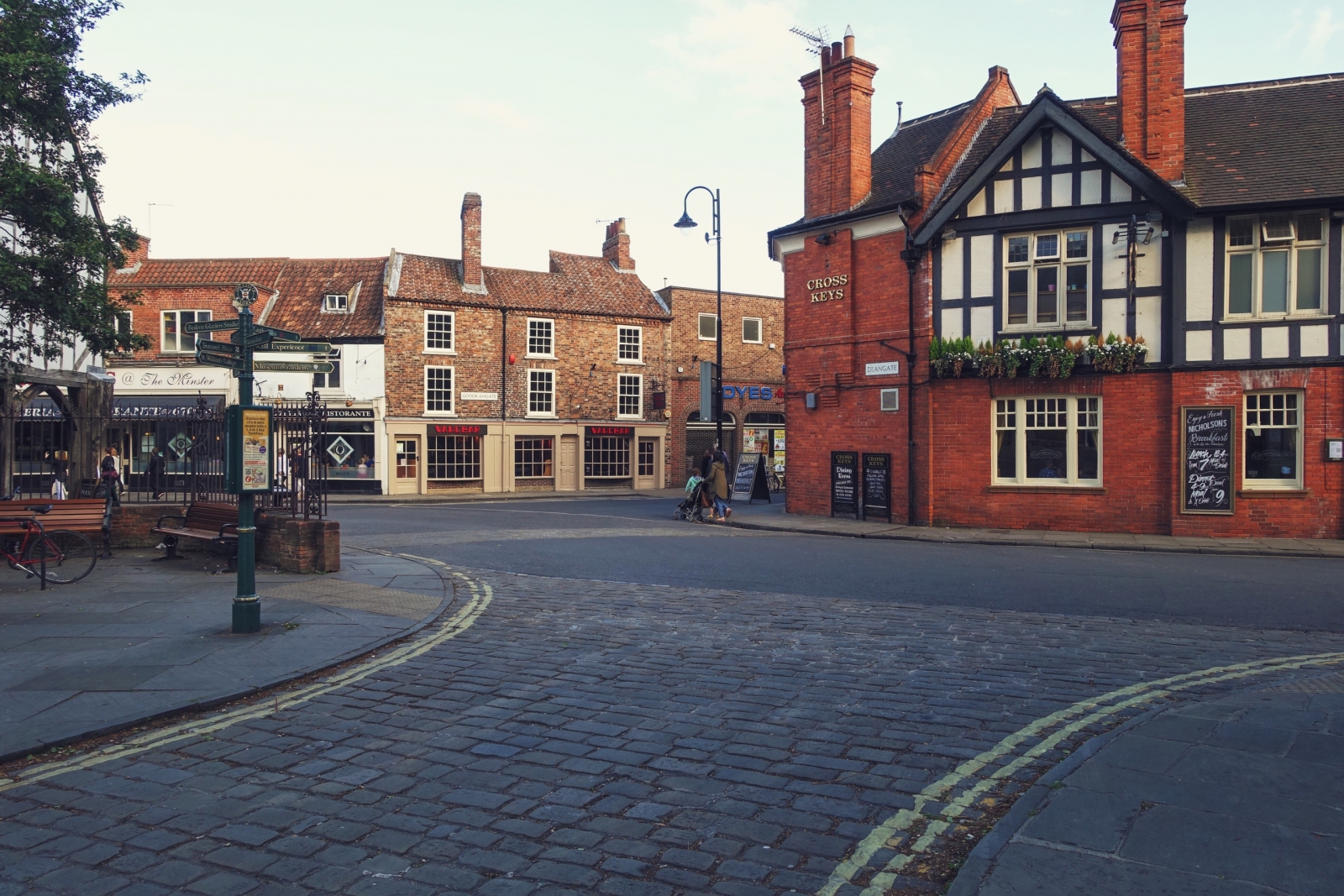
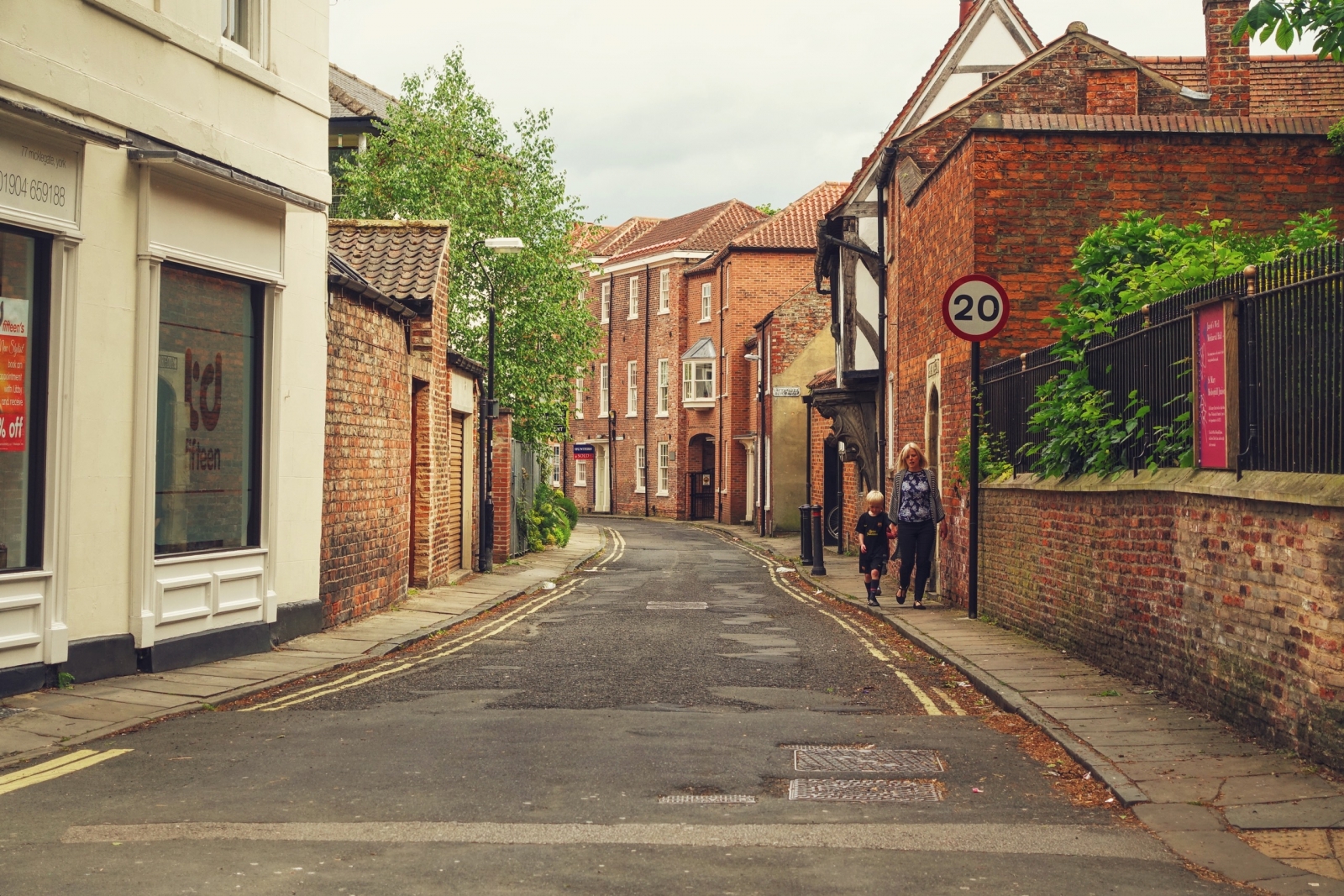
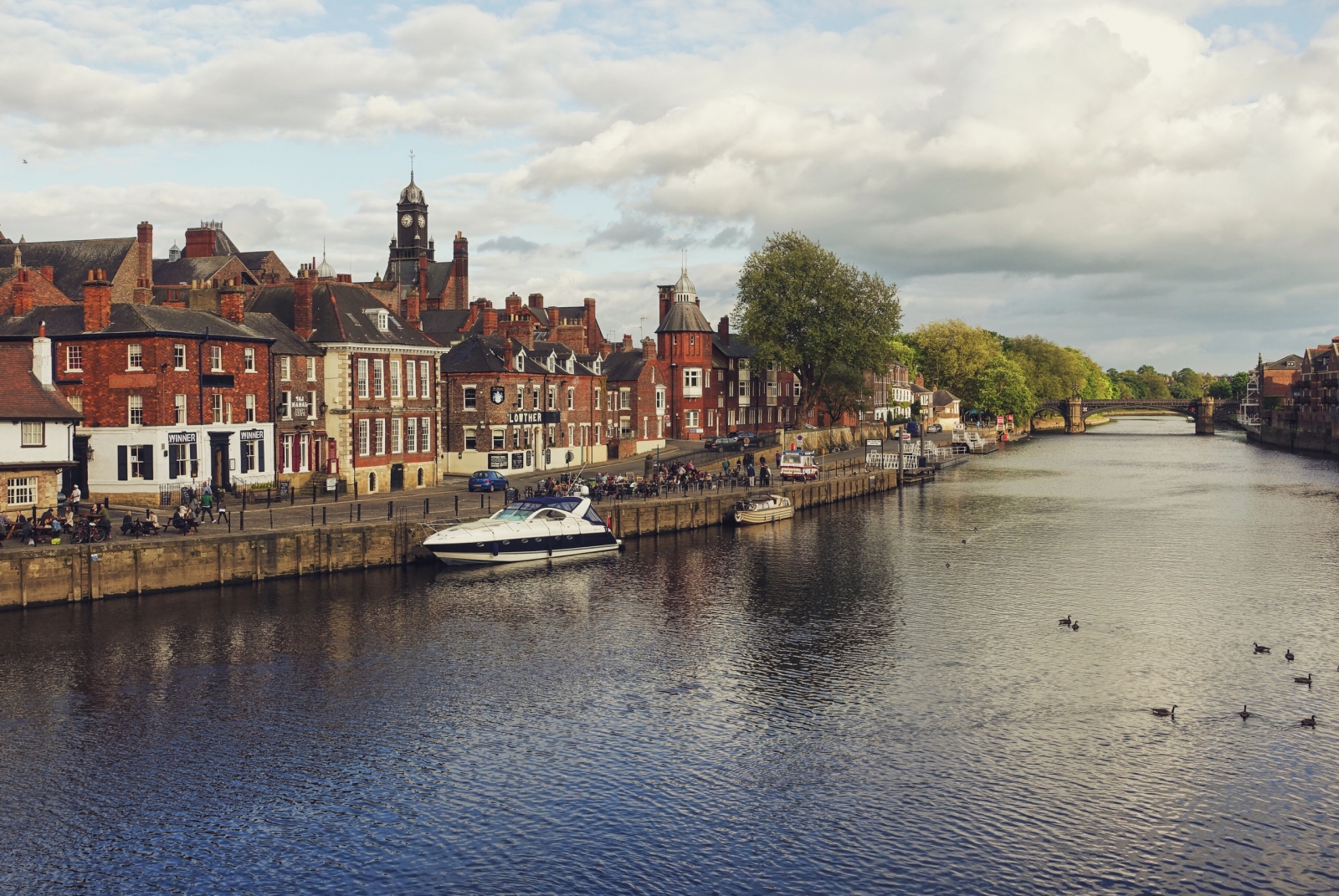
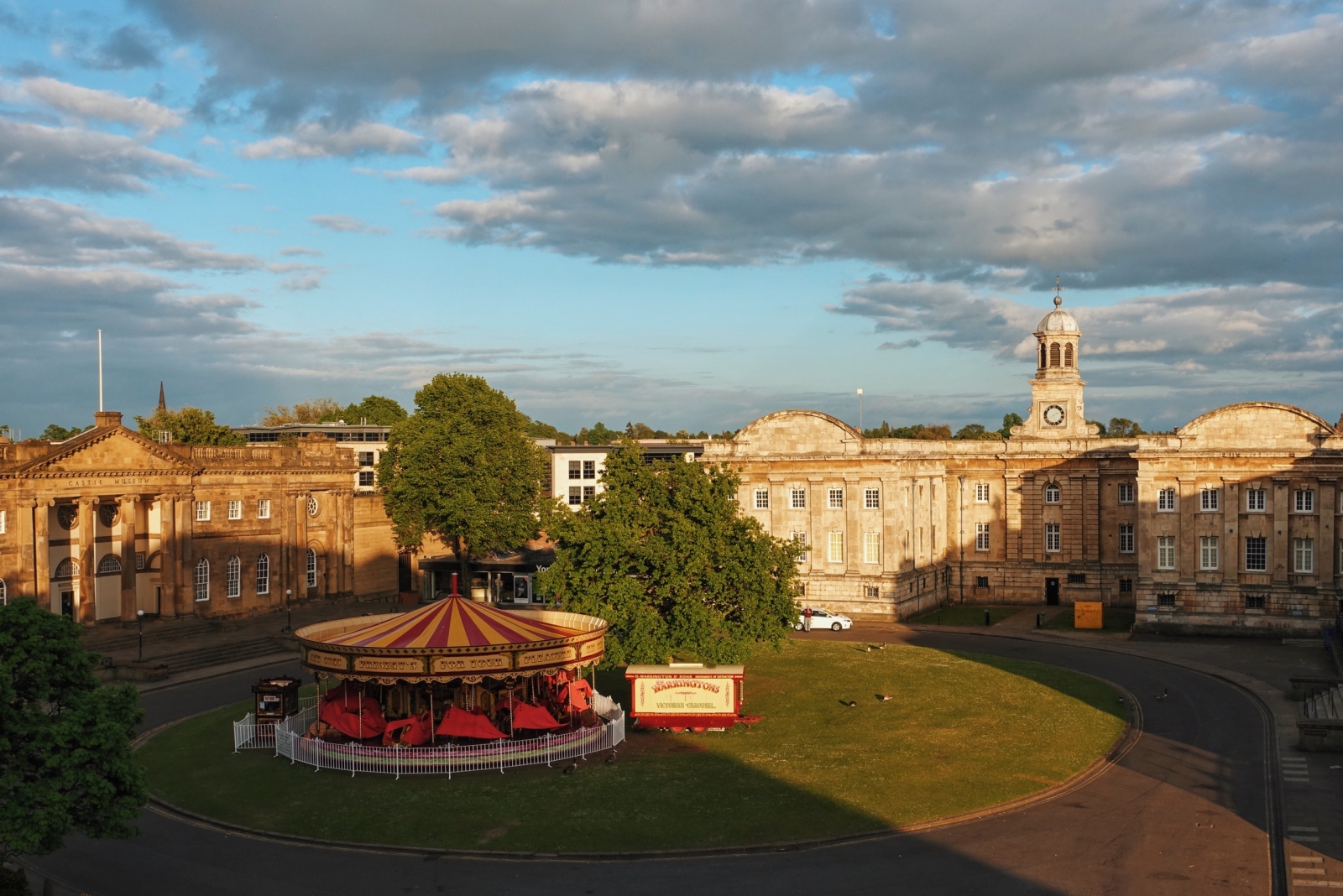

York City Walls
York has had defensive walls in one way or another since Roman times. Today, York has more miles of intact walls than any other English city. What remains are generally known as the York City Walls.
The walls also have gatehouses or “bars” which were historically used to restrict traffic, extract tolls, or serve as defense towers during wartime.
N- and I walked down the section of the walls where Monk Bar and Bootham Bar were located. The weather was perfect—sunny and cool. It was a leisurely walk with barely any other people there.
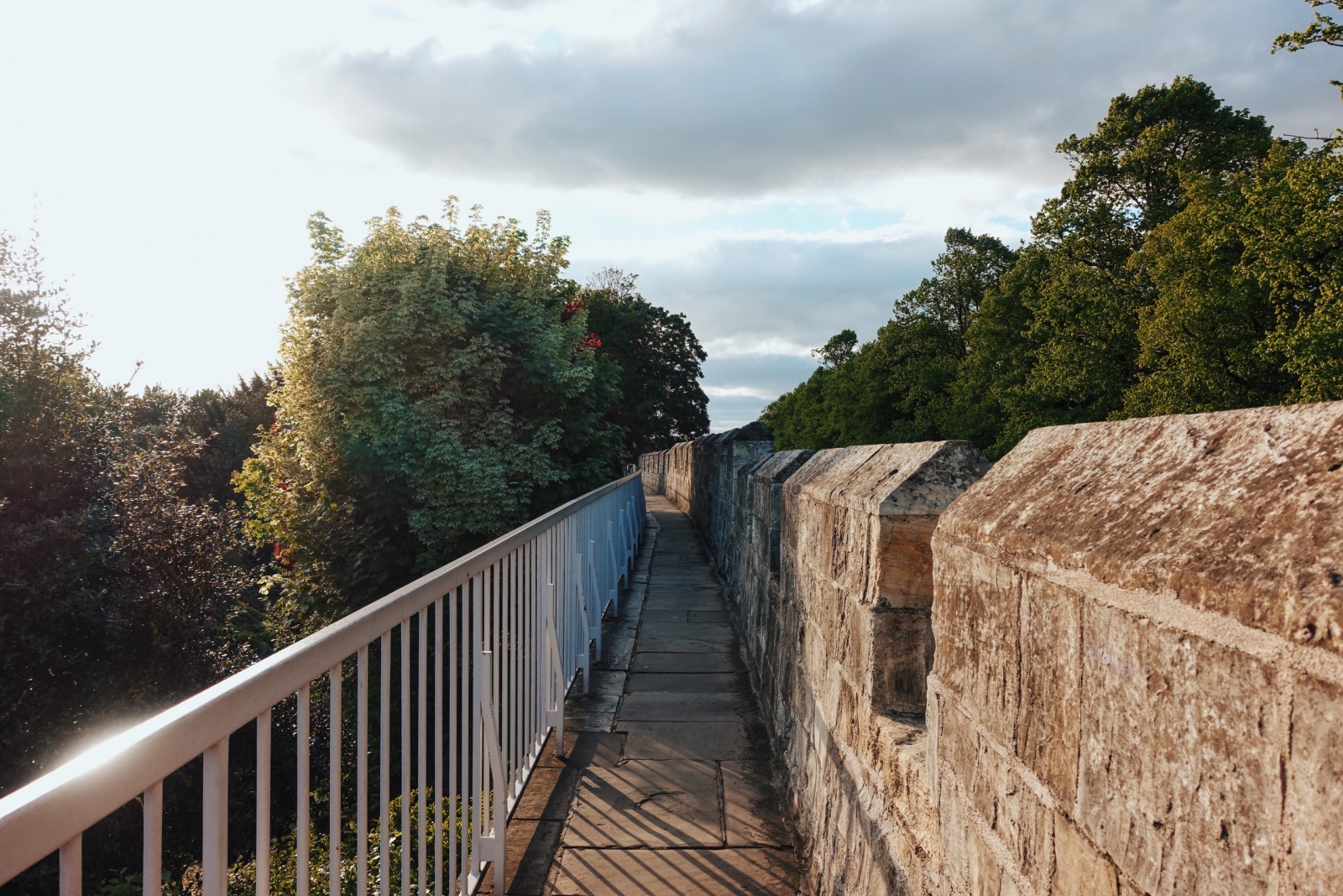
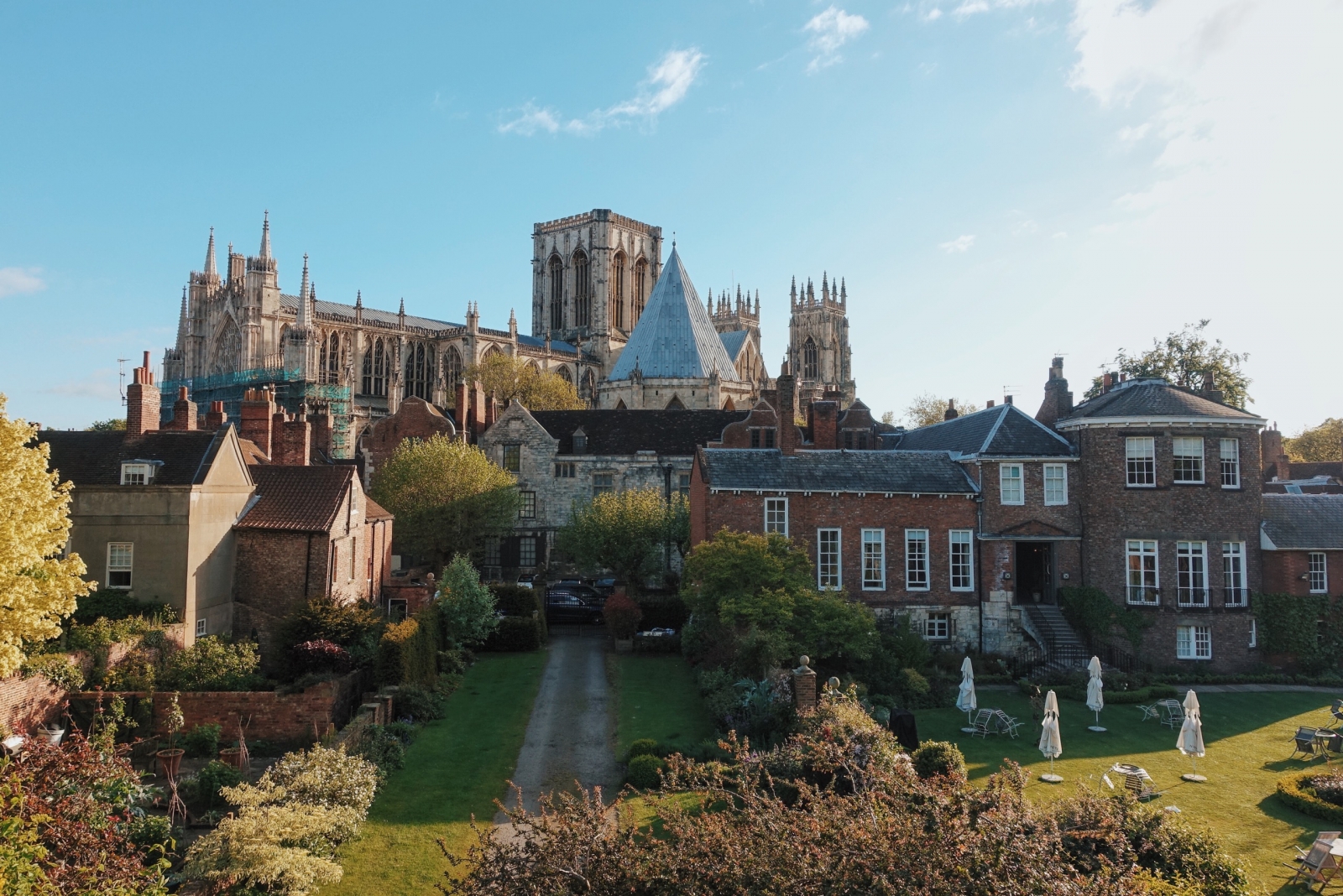
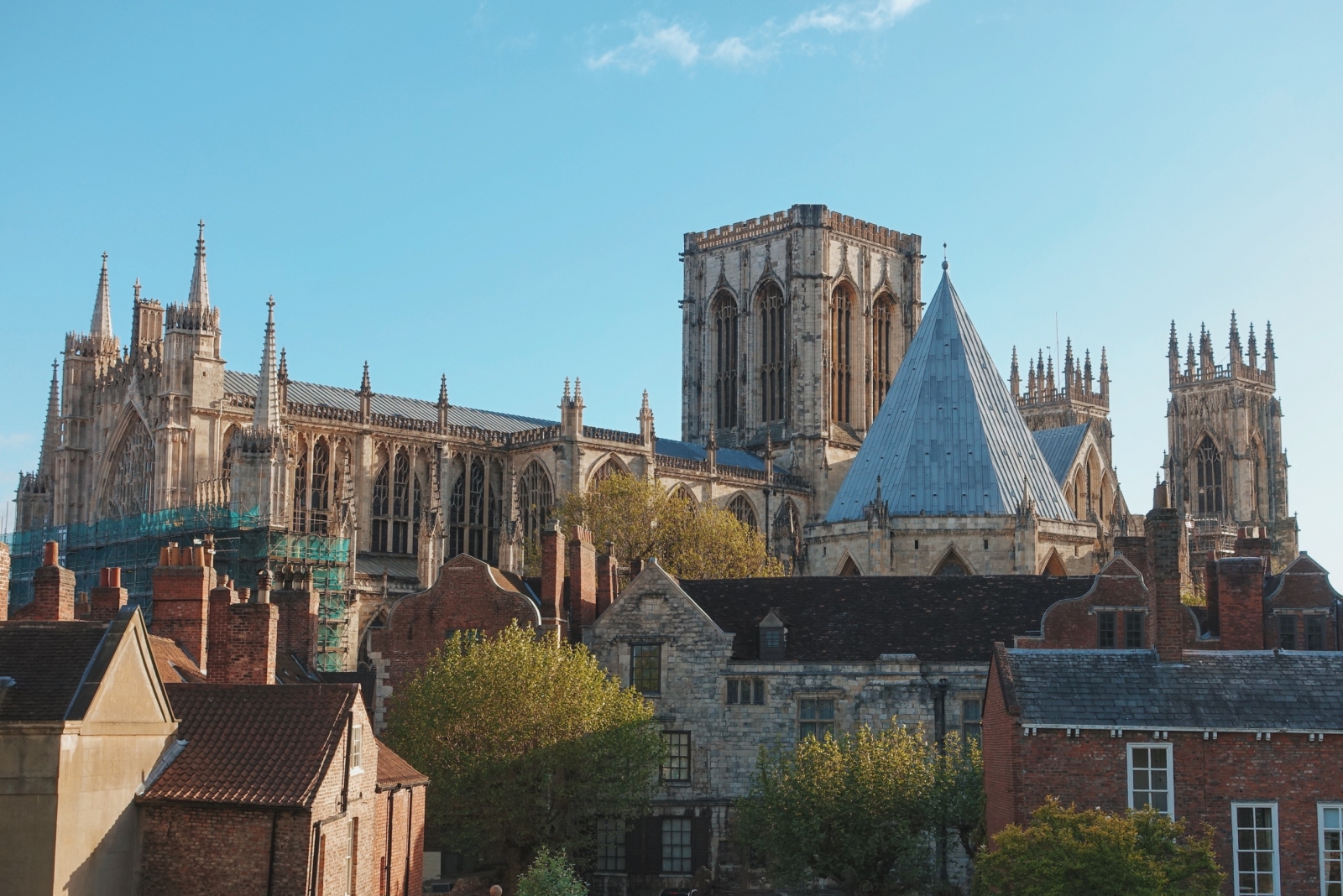
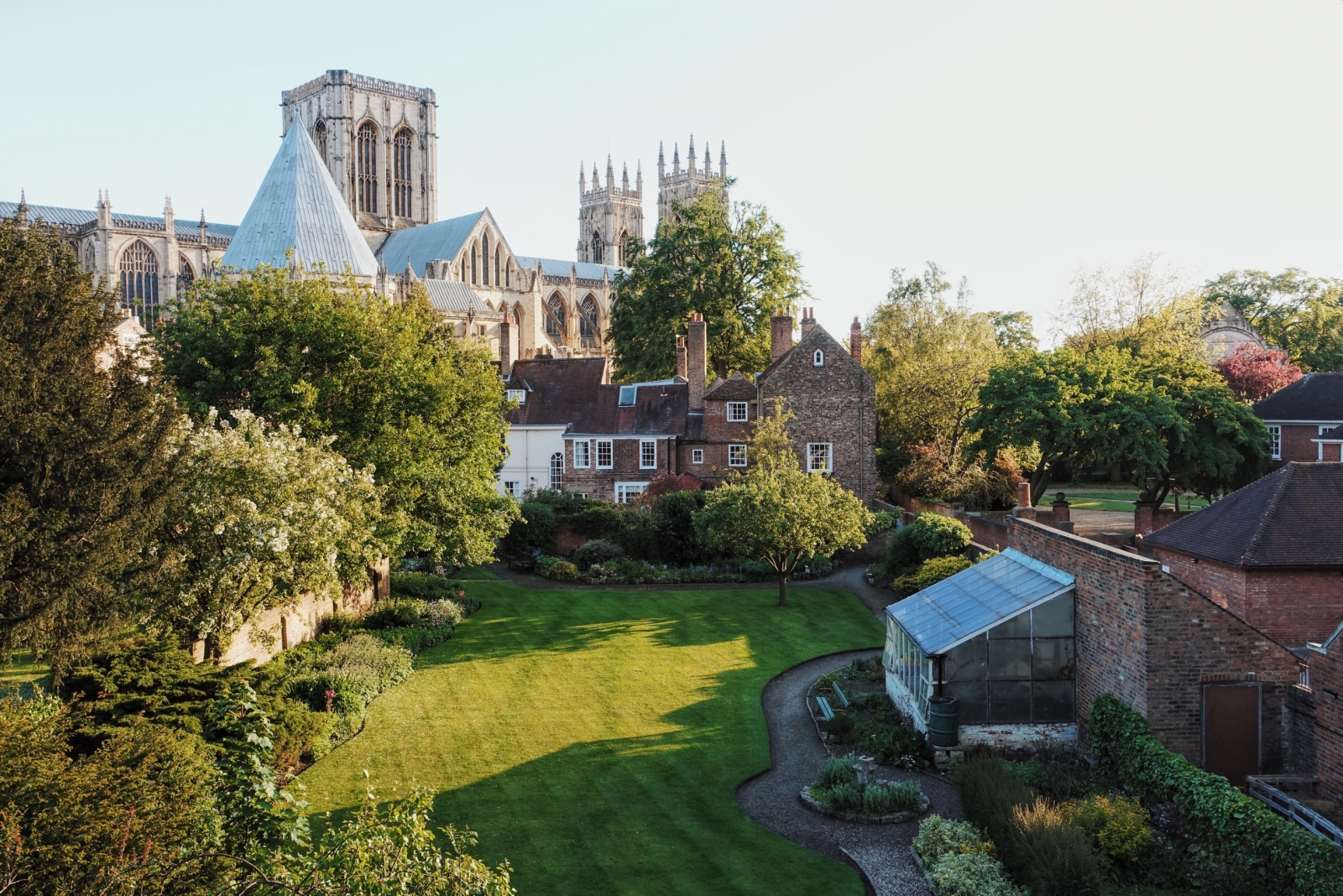
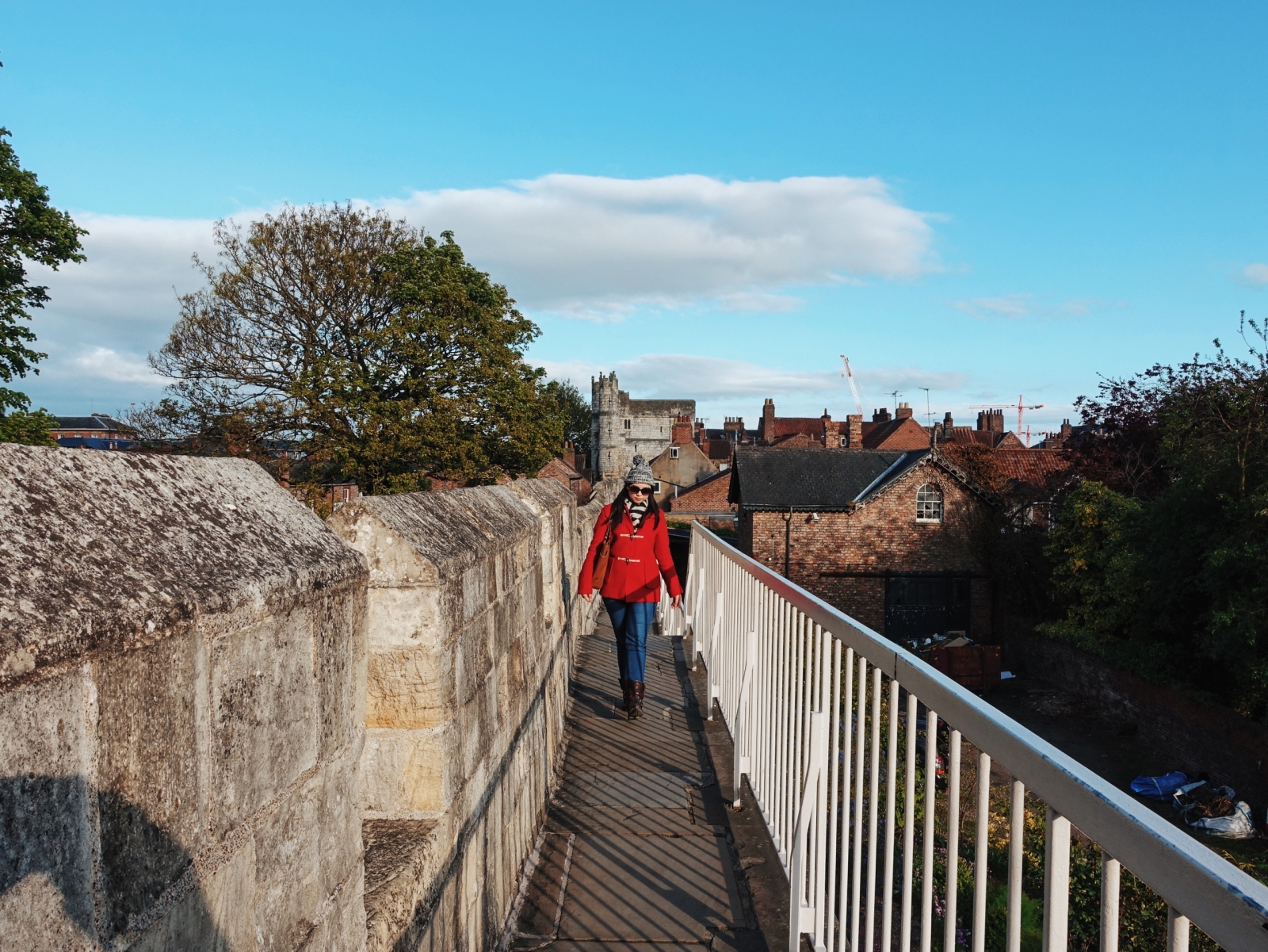
Note: The walls are thick and built for people to walk on. However, some portions are ruined, and many sections have railings on only one side. Some care is needed while walking.
The York City Walls concluded our planned itinerary for the day. Surprisingly, we didn’t feel that tired, especially considering we’d traveled from London that morning. York was refreshing, and we had some energy left.
York Ghost Tour
As we searched for a place to have dinner, N- spotted a poster for a ghost tour and remarked that we should join one if we could, maybe tomorrow. Then we entered the square in front of York Minster, and what do you know… a group of people was gathered for a ghost tour right then and there. The tour was just starting.
We decided to join them.
Our guide was an energetic white-haired man who wore a black trench coat, black top hat, and black-rimmed spectacles. He also held a walking stick with a snake on it. Who wouldn’t want to go on a ghost tour with this guy?

He had a mysterious air about him, as if he had come from a different time. He took us on an hour-long walk around town, his voice clear in the quiet evening as he told ghost stories about the places we stopped by.
This was my first time to ever go on a ghost tour—and it was the perfect place to do it. After all, York is said to be the most haunted place in the United Kingdom.
The ghost stories were varied but all interesting. Spoilers ahead. Here were a few memorable ones:
- Neighbors and passersby kept seeing a little girl at the window of a particular house, even though no girl lived there. It turns out that during the plague, the house was boarded up because the plague took its family. The little girl was still alive, but she was stuck inside and died of starvation.
- While working at the Treasurer’s House, a plumber witnessed a parade of Roman soldiers marching in through one wall and out through another.
- A man was walking through a certain area when he heard the sounds of children playing and laughing—but there was nothing there. It turns out that area used to have a halfway house for orphans who were treated poorly.
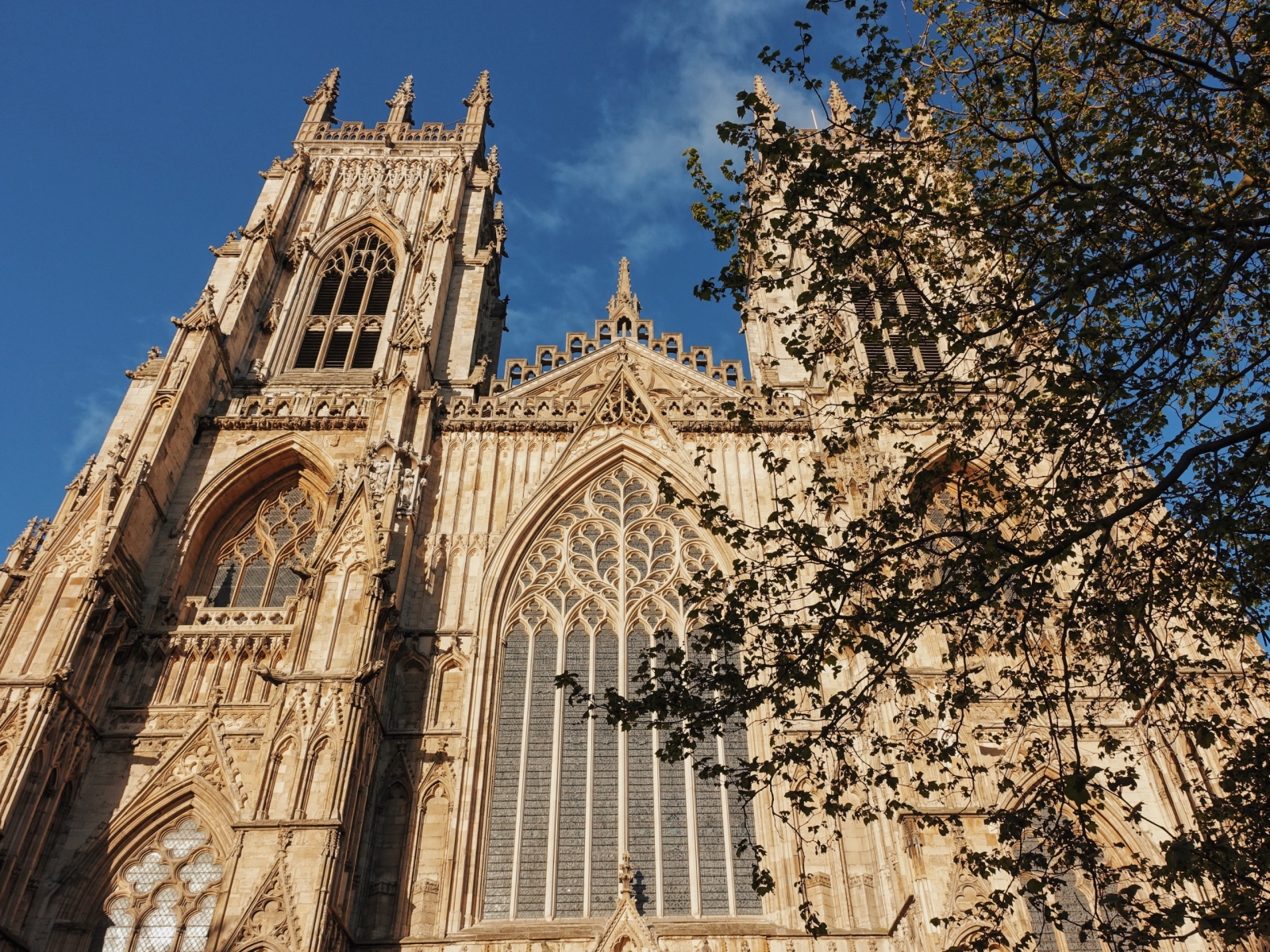
I wasn’t able to get the guide’s name, but I do have a photo of him above. He was an excellent storyteller, and if you spot his ghost tour in York, I recommend that you join. In general, though, there are several ghost tours available in York.
Dinner at Ambiente
We had an excellent dinner at Ambiente, a quaint, cozy tapas bar and restaurant. We liked the chicken liver so much, we ordered a second serving. We also enjoyed the calamari and the chorizo y garbanzos.
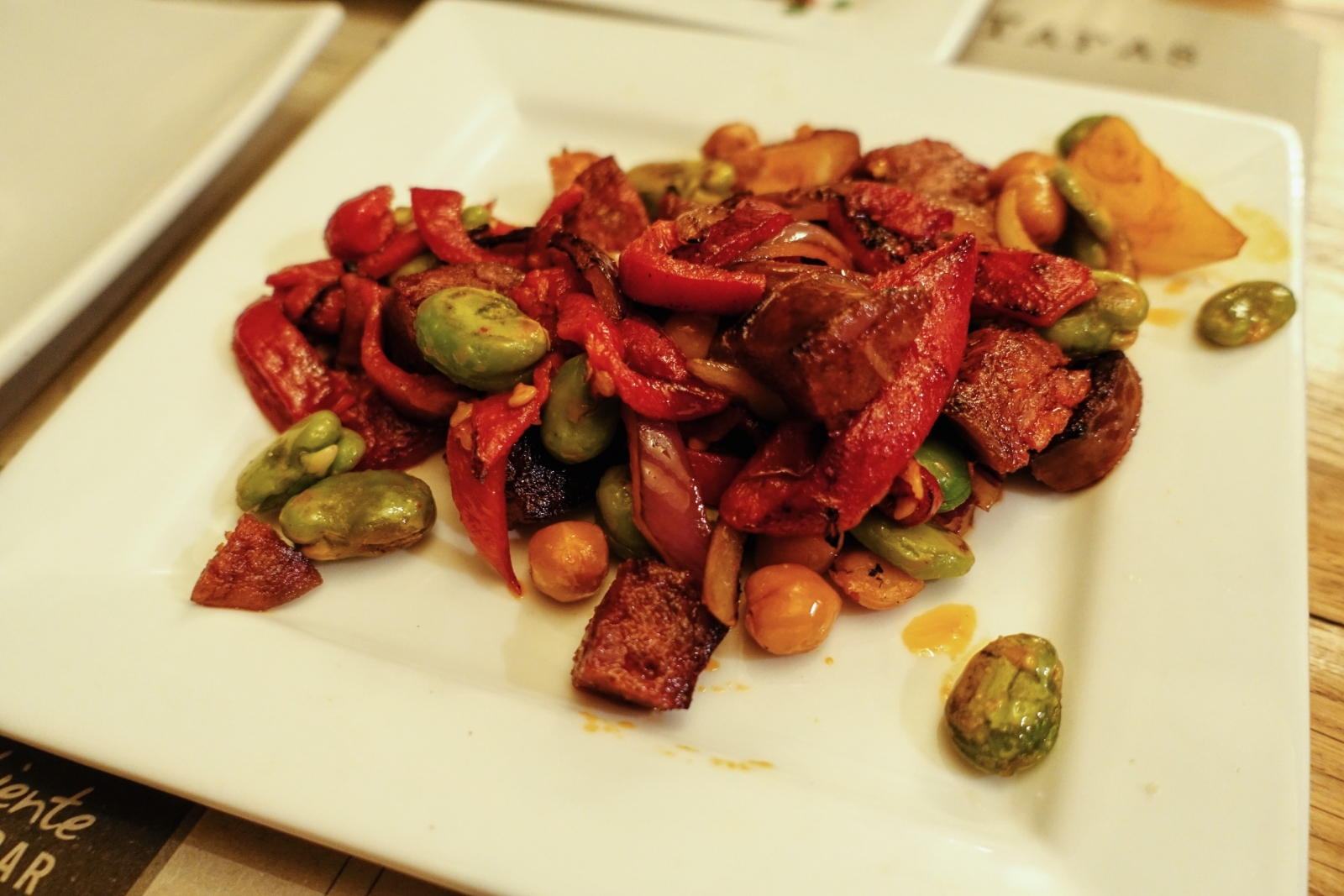
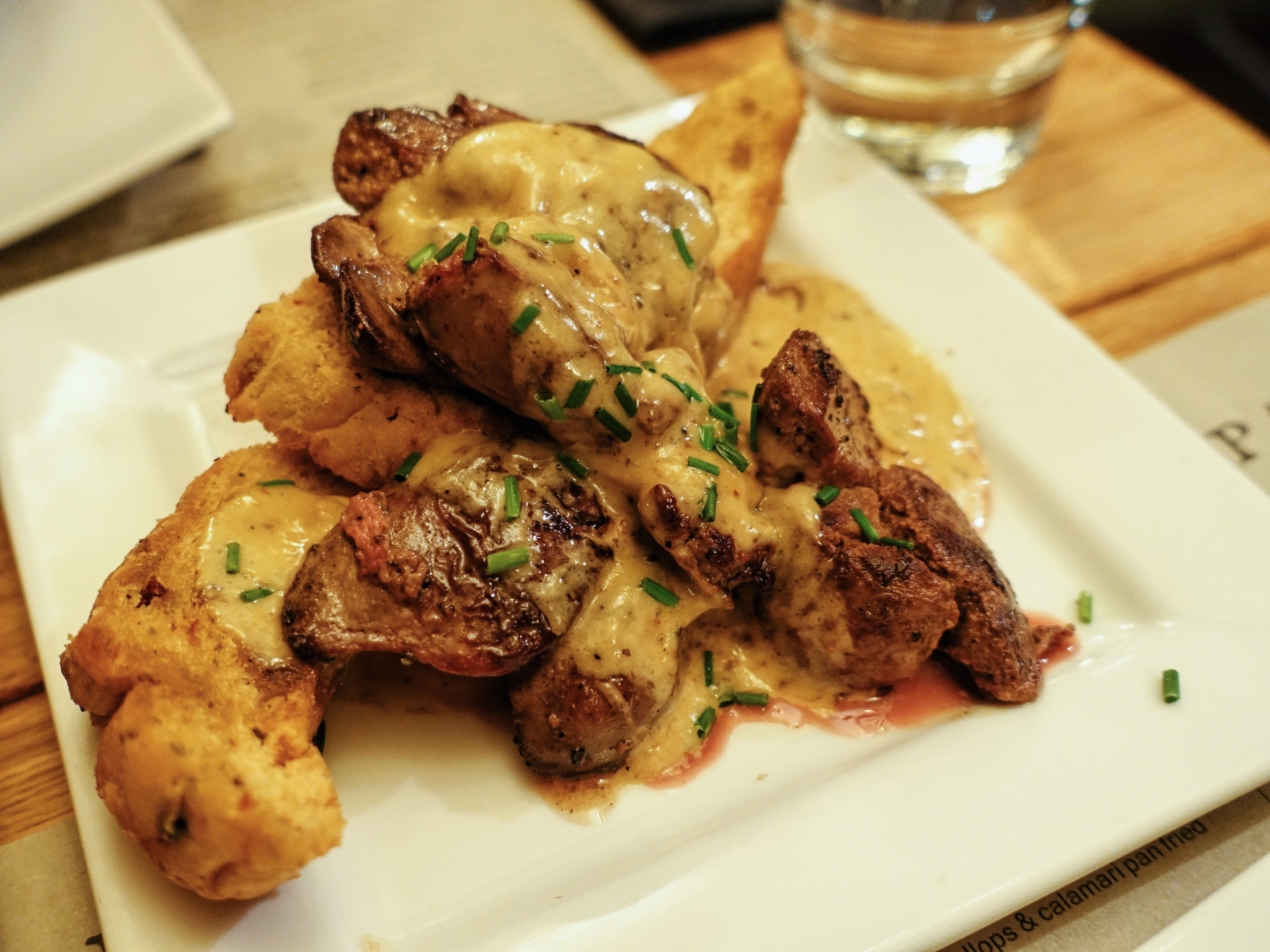
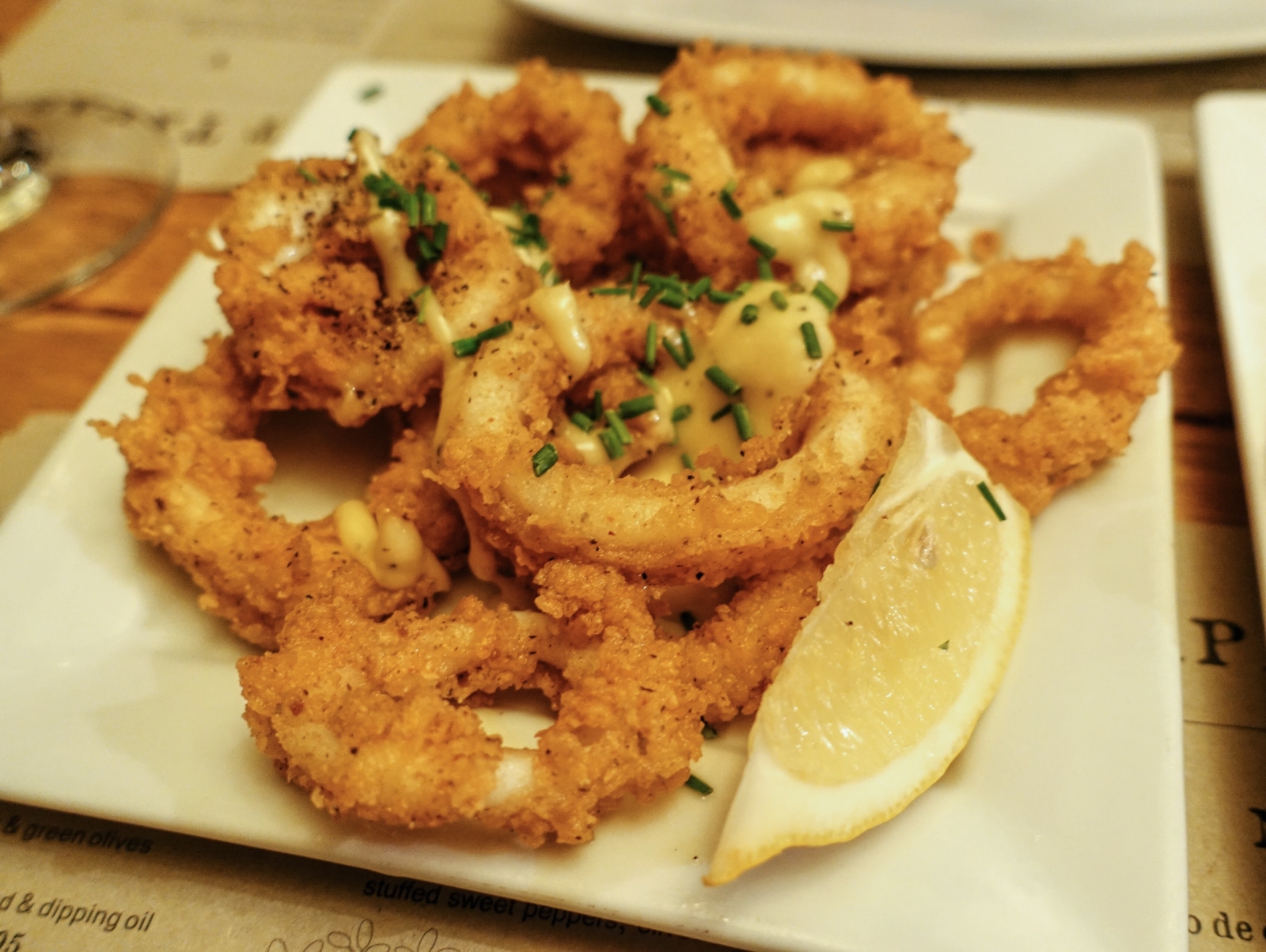

The End of the Day
After dinner, we started walking back to the hotel. York’s narrow streets were dark, quiet, and empty.
As we approached the Shambles, we heard sounds gradually coming from afar. Was that… singing?
We reached a small square—and the sounds became clear. There, right before us, a group of twenty or so middle-aged men and women were singing a hymn together. They smiled at each other as they sang.
There was no one else around. No audience, no microphones. Only their voices and their song.
Their voices filled the night air, combining in perfect harmony. And standing there, watching this choir singing in the middle of a quiet old town, felt at once completely otherworldly and perfectly natural. It was a beautiful moment, and a perfect end to our first day in York.
Day Two
The Postern Gate
We started off our second day in York with breakfast at the Postern Gate. We each got a full English breakfast: bacon, sausage, fried egg, baked beans, hash browns, tomato, and toast. I was only able to finish about 3/5 of my plate. The best part? Our meals only cost £2.99 each.
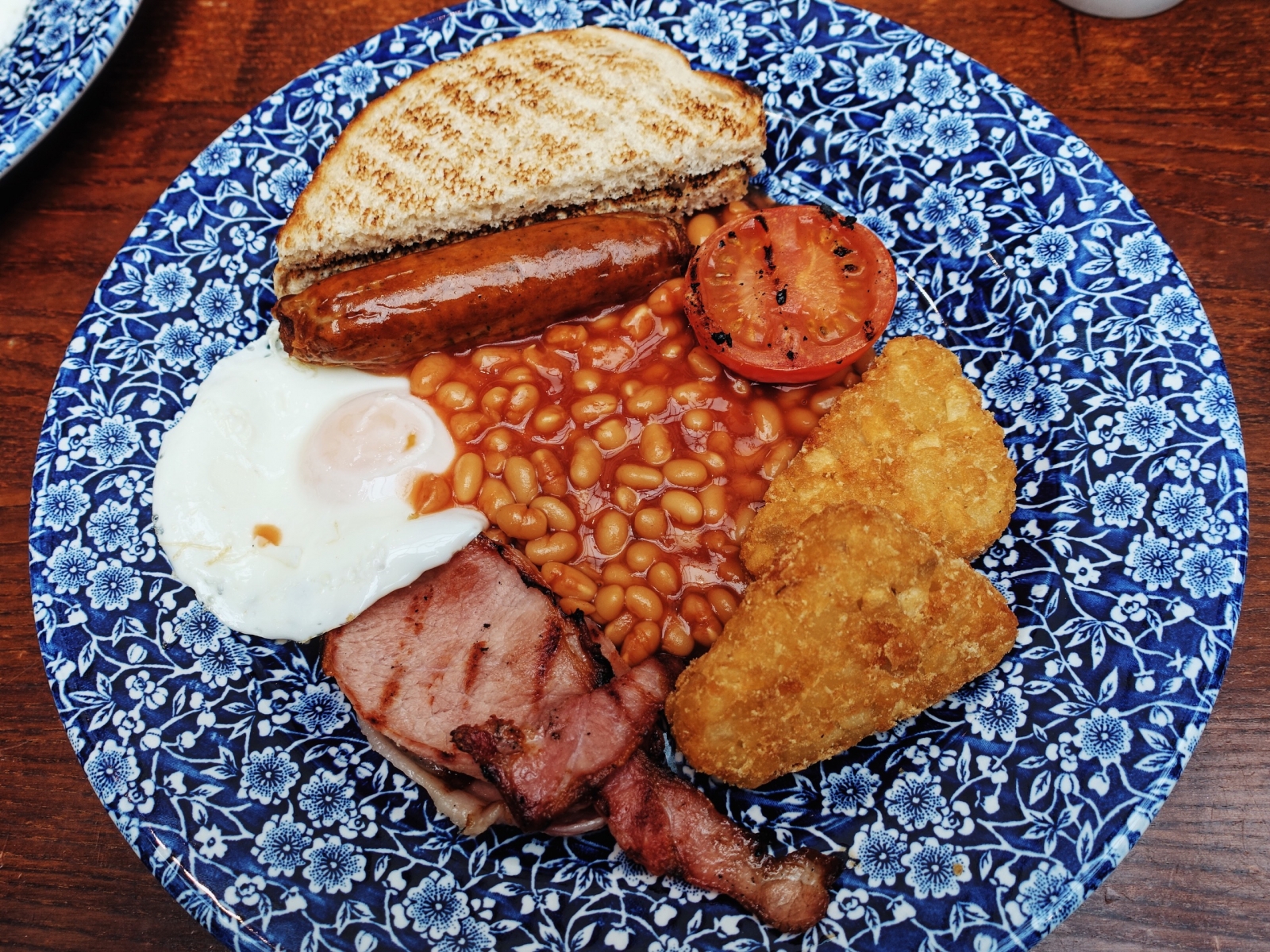
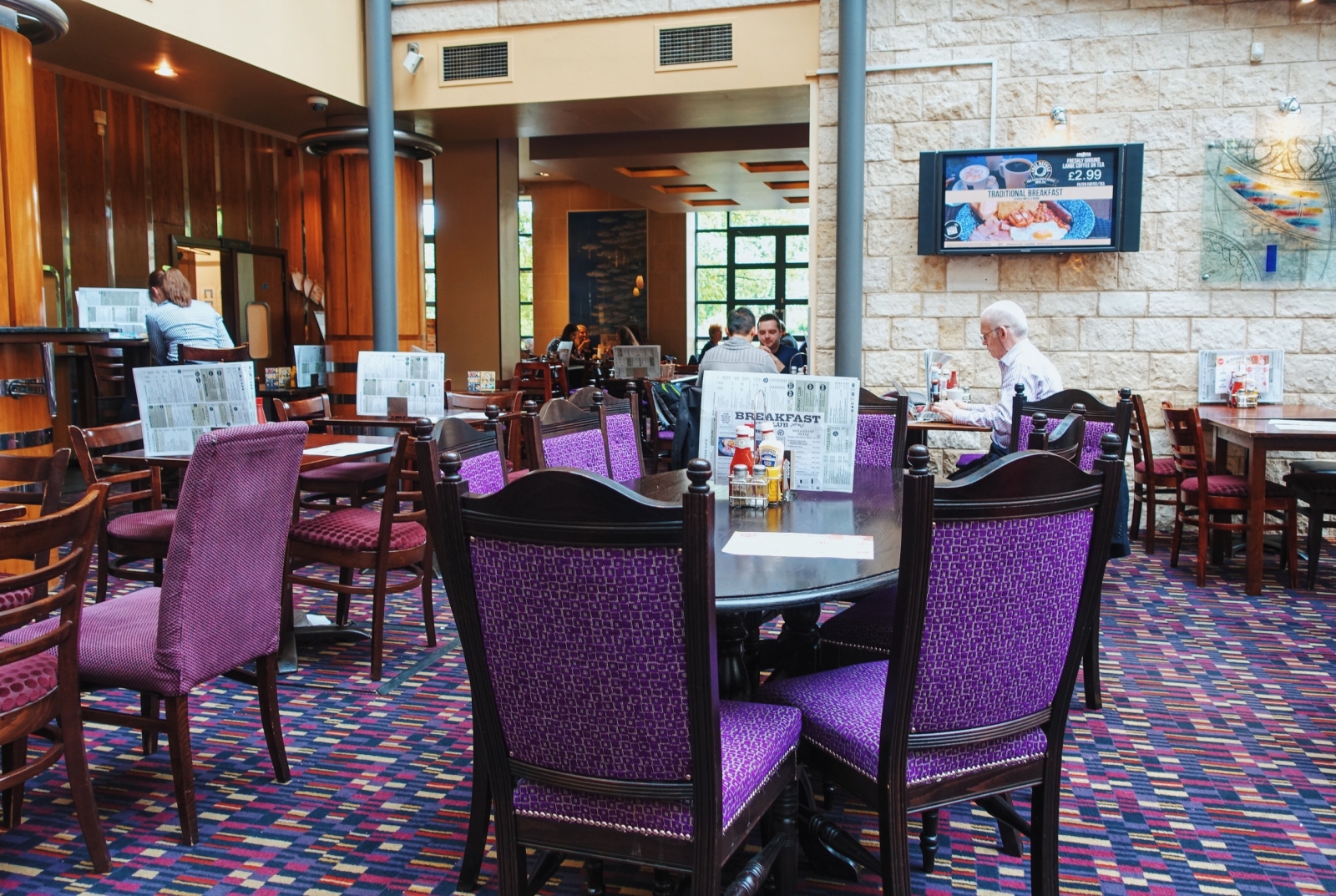
National Railway Museum
The United Kingdom’s National Railway Museum is one of York’s most popular attractions. Its collection includes over a million objects from more than 300 years of railway history, such as:
- Locomotives and rolling stock (300 rail vehicles in the collection)
- Railway posters
- Signaling and telecommunications machinery, stationary engines, and other machinery
- Furniture, timepieces, fixtures, and fittings from railway buildings
- Postcards, tickets, passes, and labels
- Railway models and toys
I found the museum comprehensive and the exhibits well done. I have to admit, though, that my interest in train mechanics is lukewarm at best. I would have loved to enter the cabins and see what the trains were like as a passenger instead. Still, if you enjoy trains, you’ll enjoy this museum.
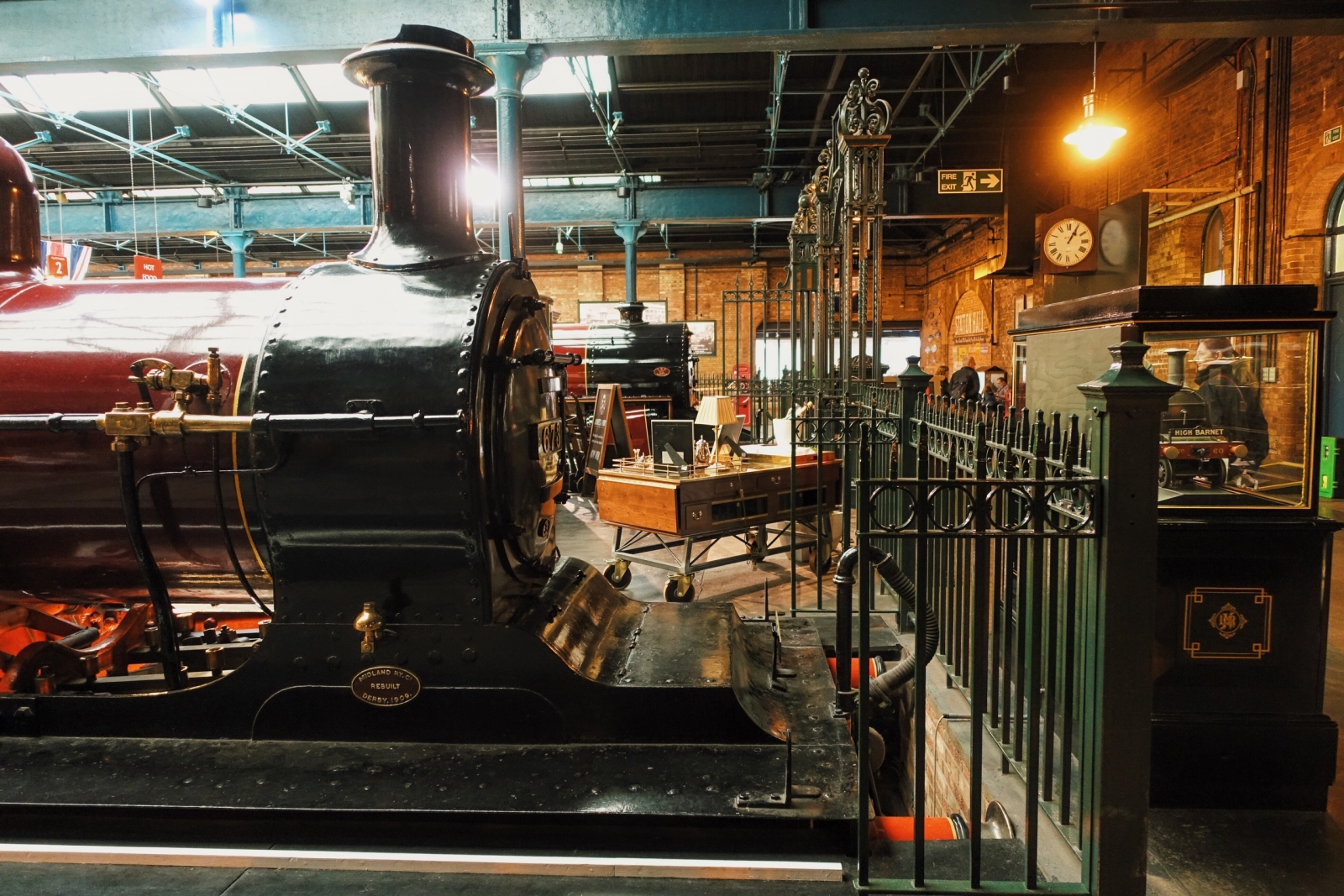

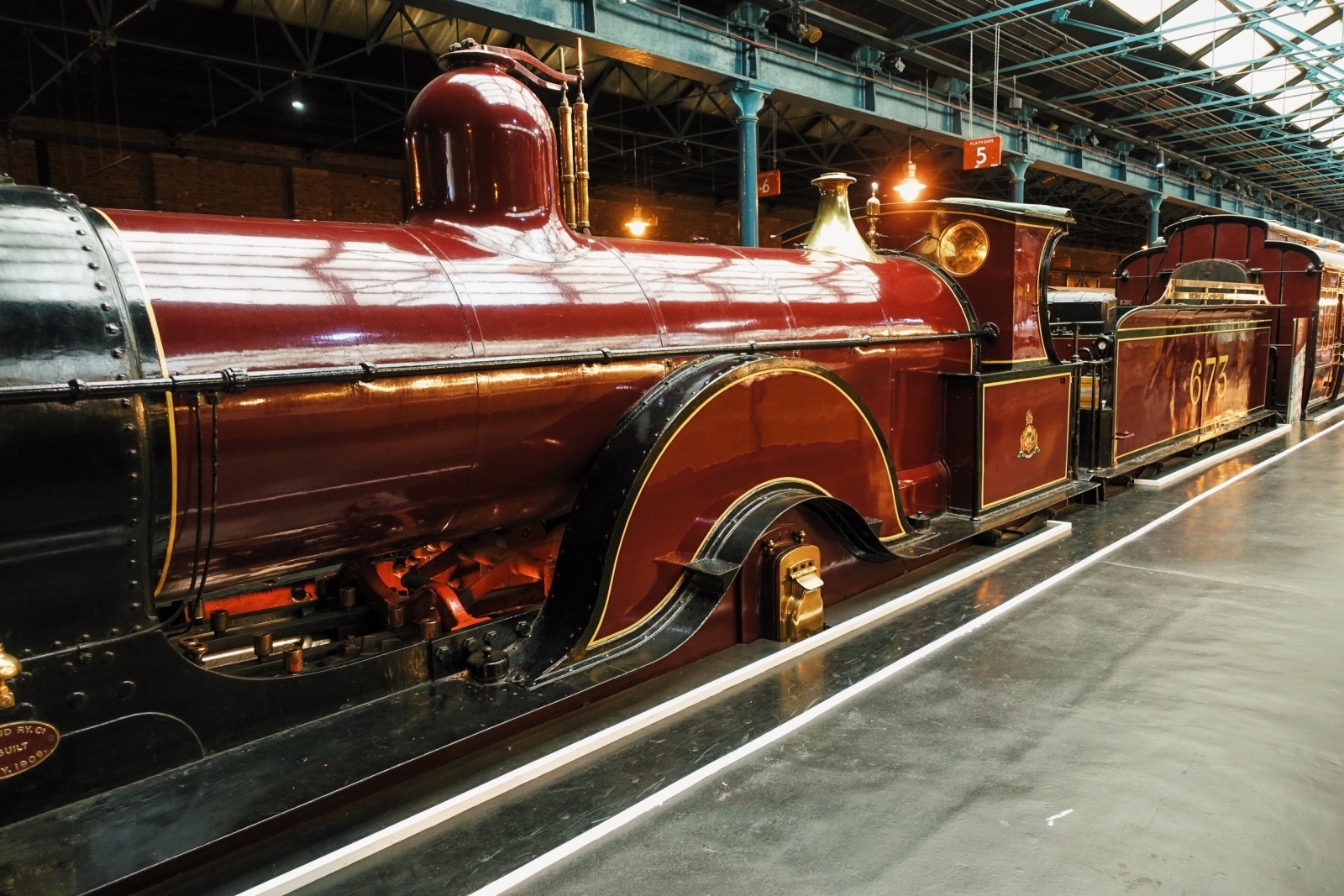
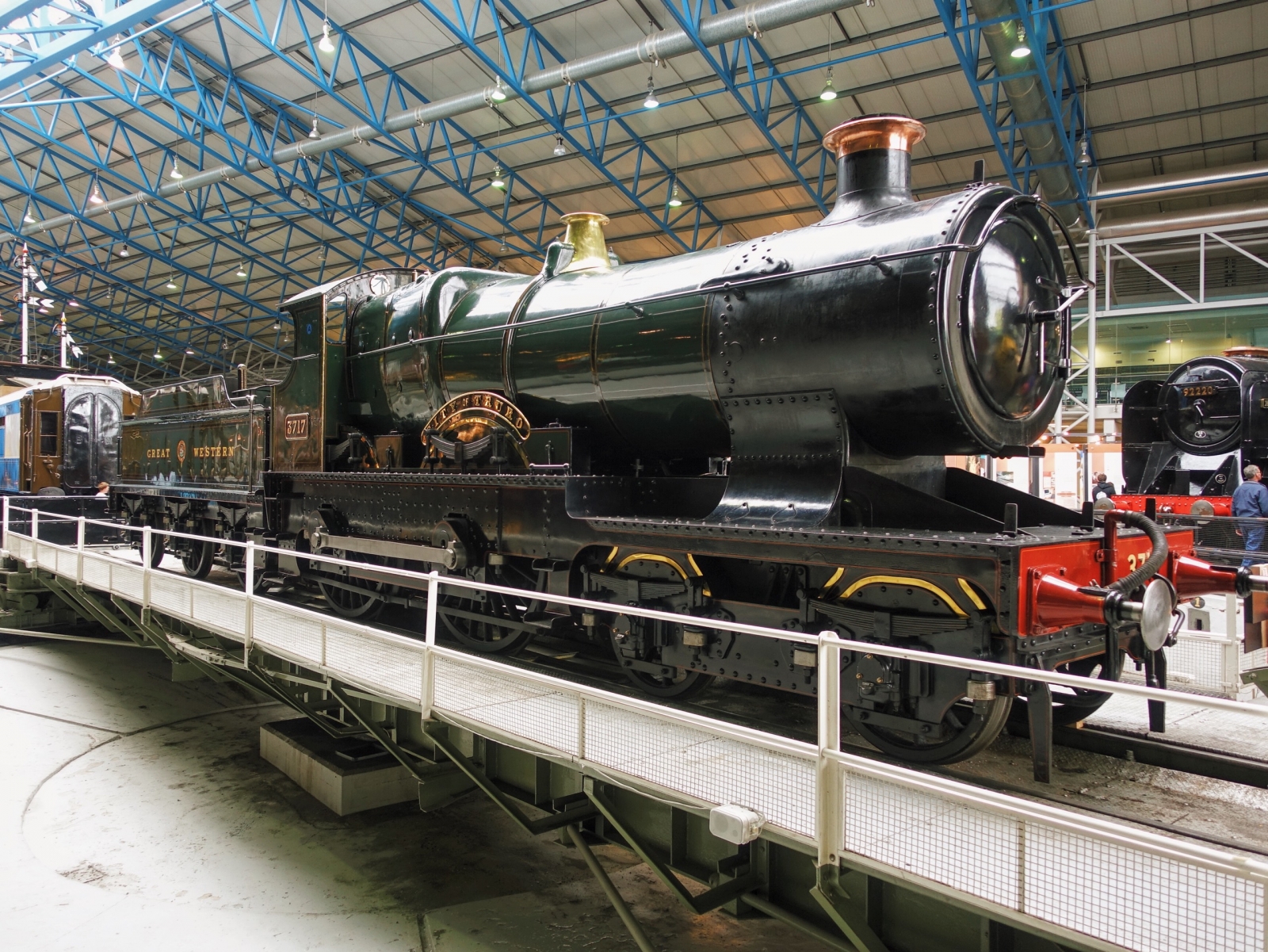
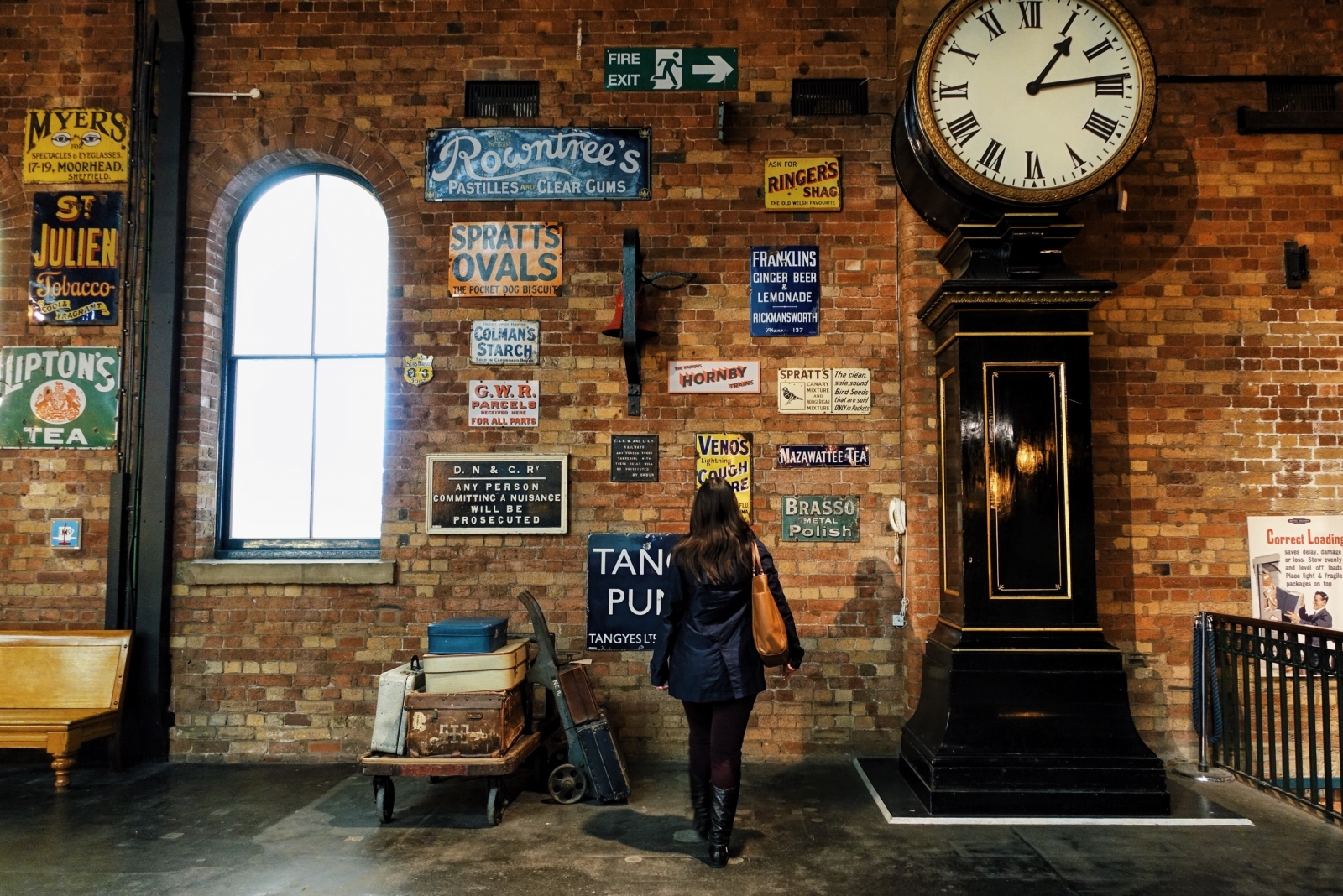
Treasurer’s House
This house was traditionally the residence of the Treasurer for York Minster (York’s cathedral). The house has passed through various owners over the centuries. In 1897, a wealthy industrialist, Frank Green, bought it and turned it into an extravagant home. He gave the property to the National Trust in 1930, along with its furniture, art, and antiques.
The house was definitely interesting. A volunteer in each room told us everything we wanted to know about that room.
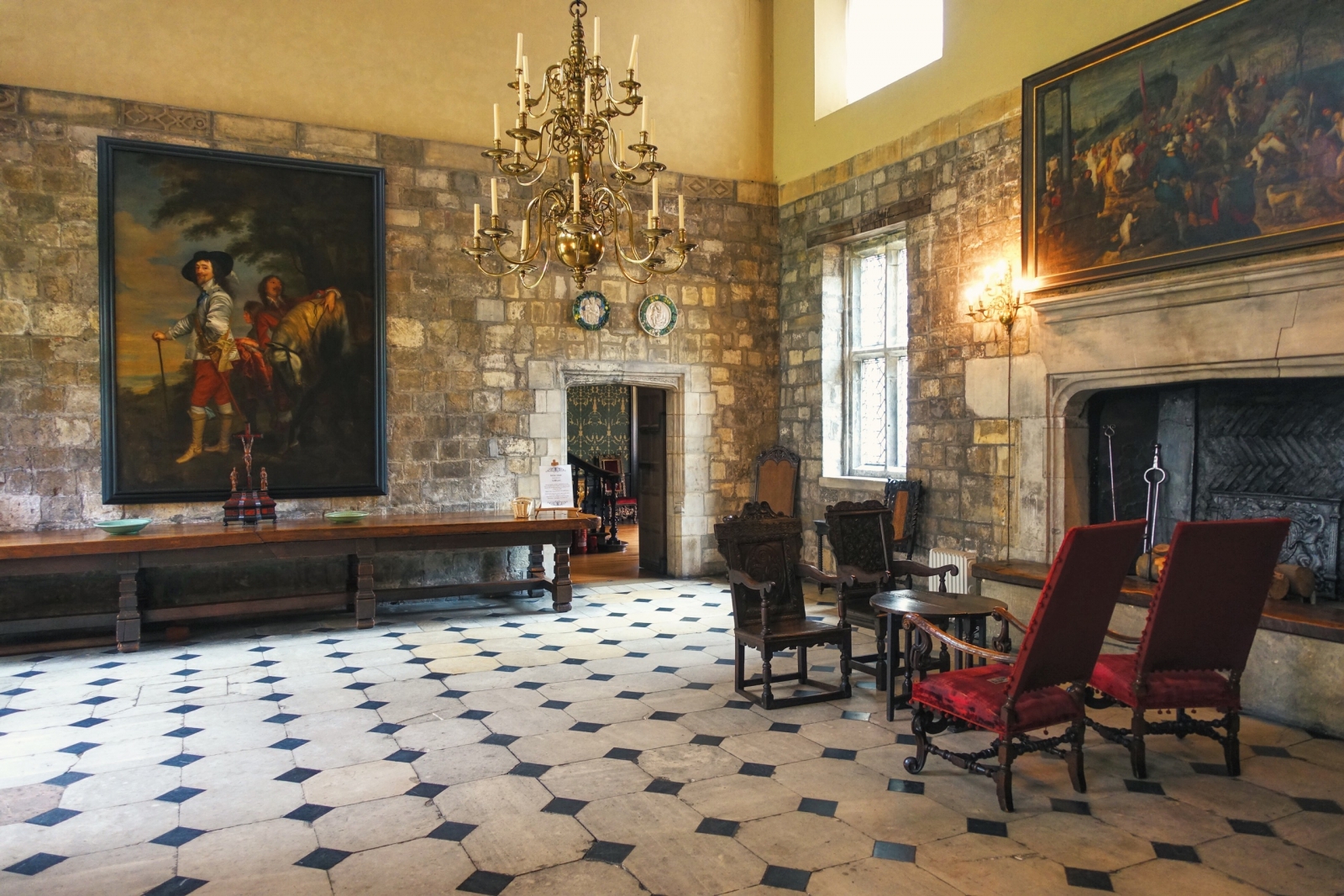

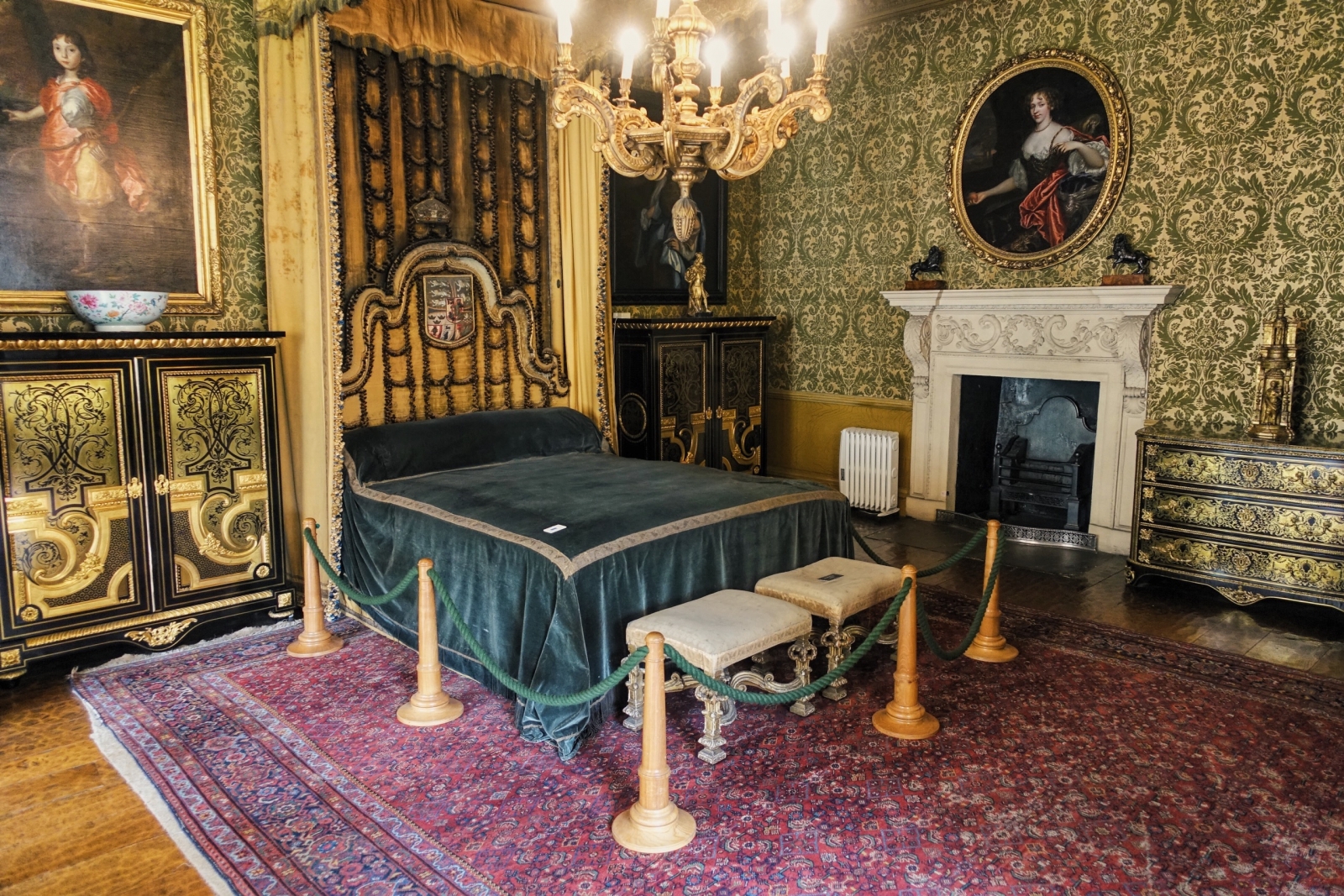
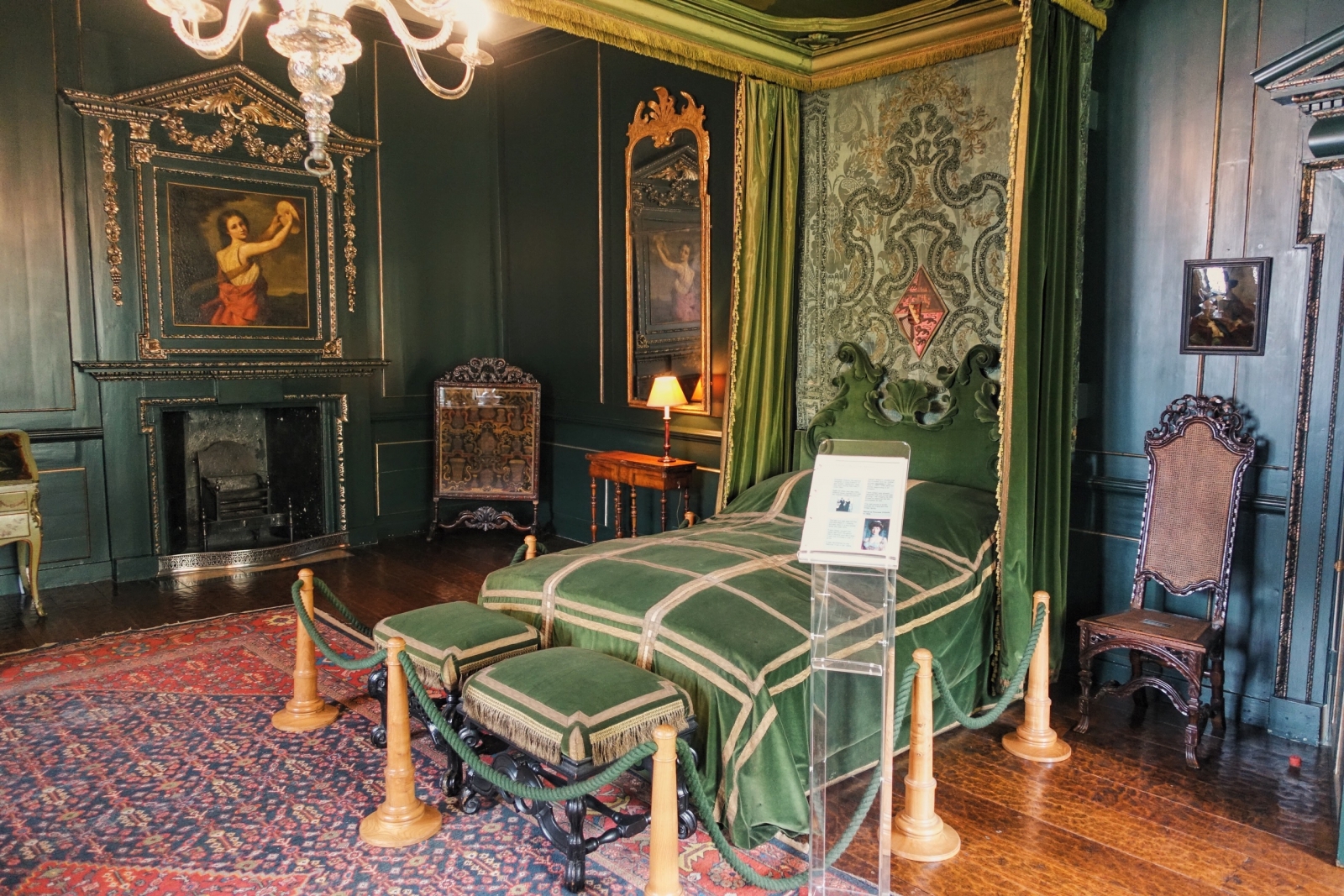
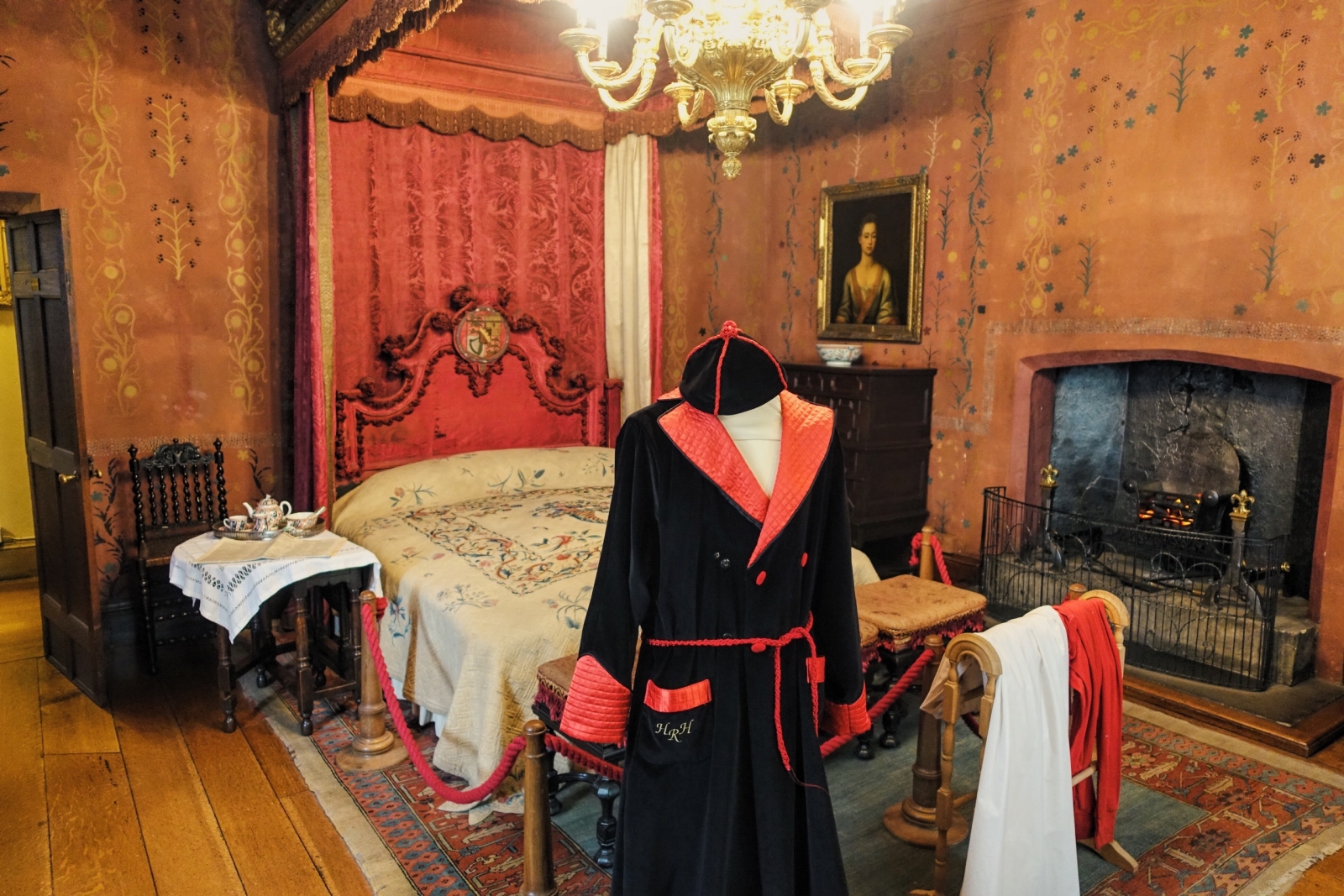
You might remember the plumber who claimed to see Roman ghosts here, which I learned about in the ghost tour. It turns out they give tours about that: “Head into the cellars with your guide to discover the archeology below our feet and see where Harry Martindale saw the Roman ghosts literally walking through the wall.” Click here for details.
Lunch at Drakes Fish & Chips
We got some takeout from Drakes, which according to their window display was “probably” the finest fish & chips in York.
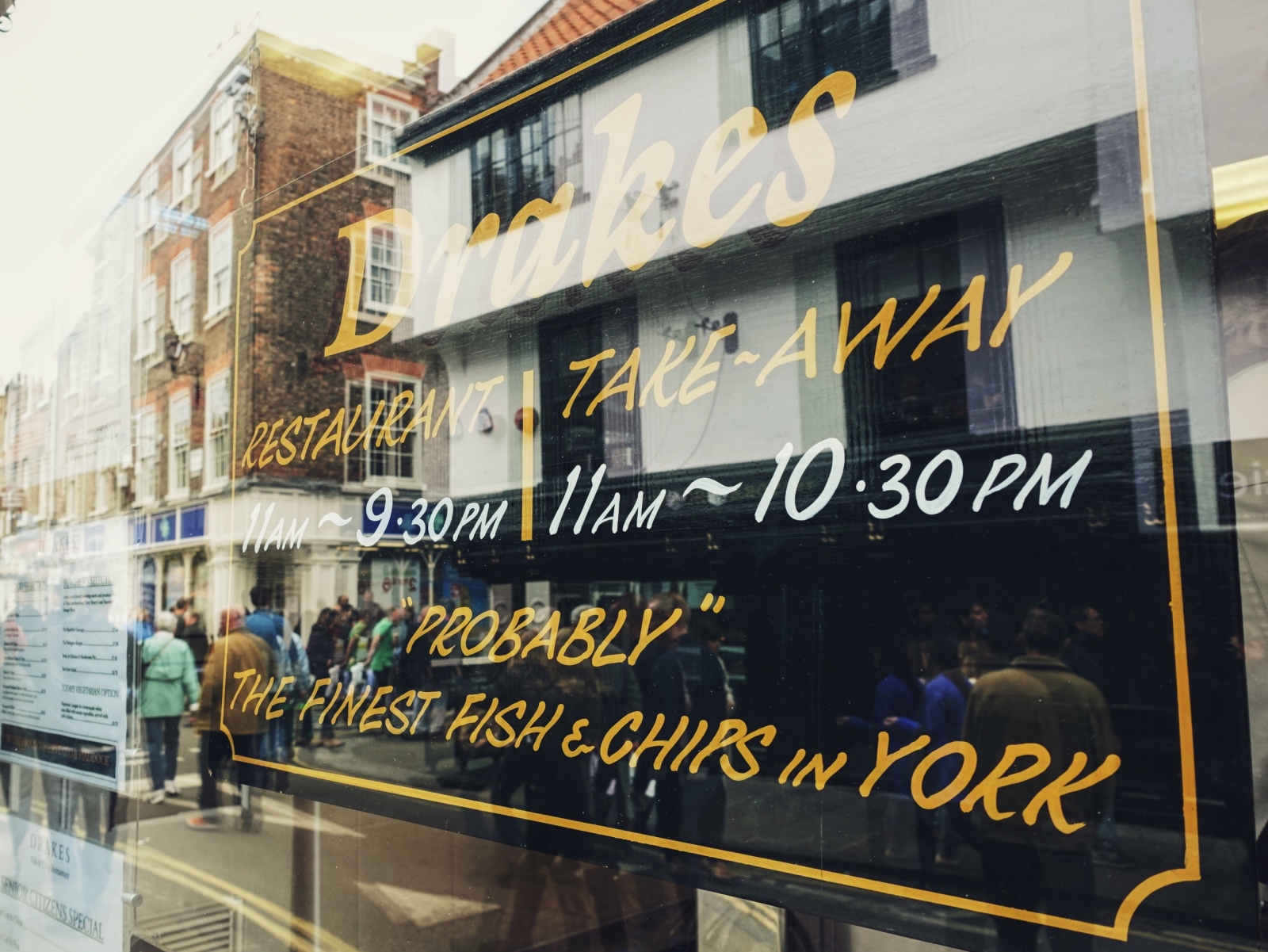
It was the best fish and chips we had during our entire UK trip: delicious, reasonably priced, and easy to eat outdoors.
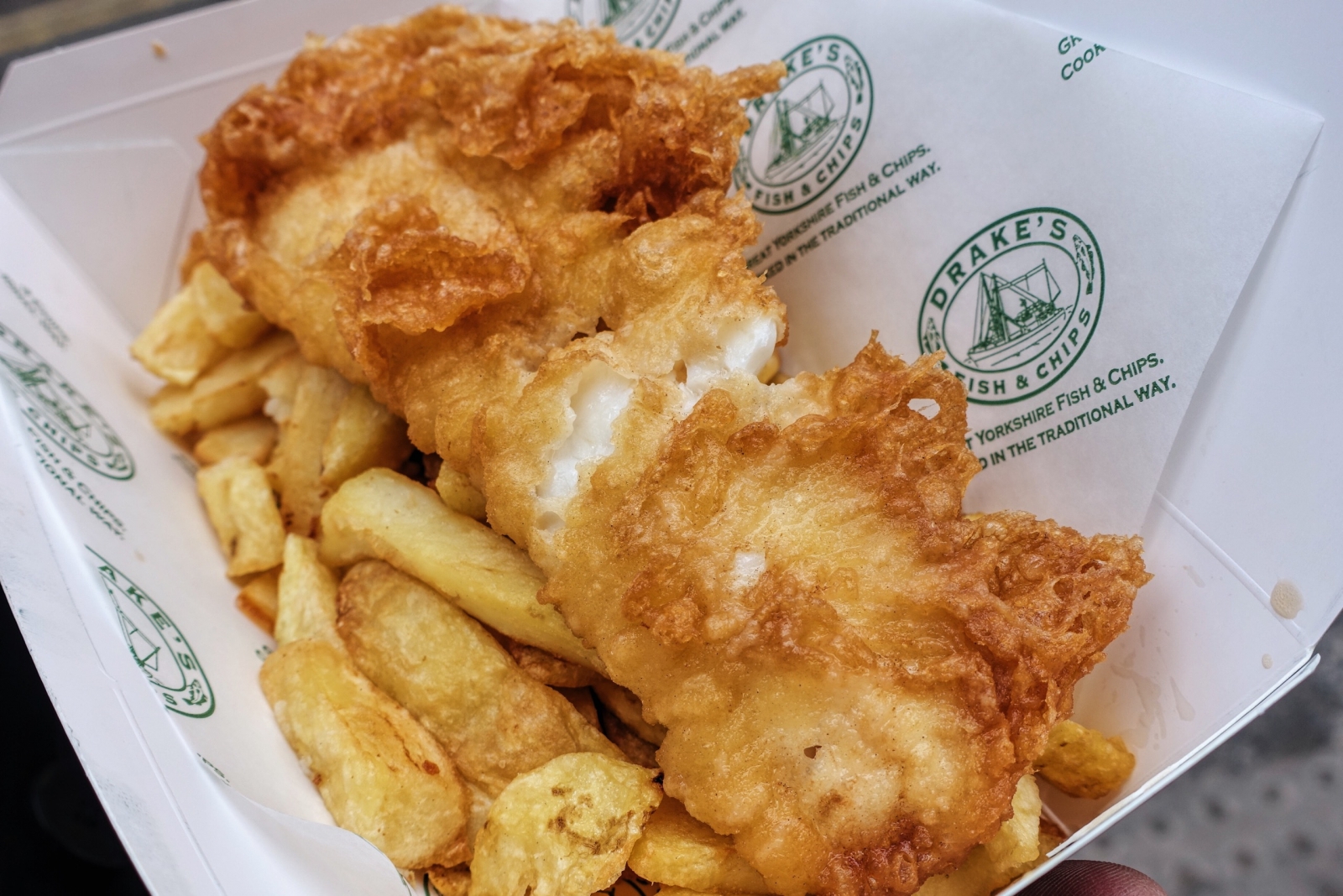
We then discovered that the square and the Shambles—almost empty the day before—were now crowded with day trippers. We ate our fish and chips while sitting on a bench, watching a street magic show with more hype than magic.
York Brewery Tour
We headed to York Brewery for a tour and some beer. The brewery has been making fine ales since 1996, and their beers are served in pubs around York and throughout the UK.
Fun fact: The brewery’s building hails back from the late 16th century. It was where Joseph Aloysius Hansom, the inventor of the Hansom Cab, was born.
We started off with a drink at the brewery’s in-house pub. Then we gathered with the other guests and were taken on a tour of the premises.
Our guide was a brewery employee who was visibly passionate about the subject of making beer. He even told us about his own personal microbrewery at home. As he showed us around the facilities, he explained the whole process, pointing out the machines and materials they used.
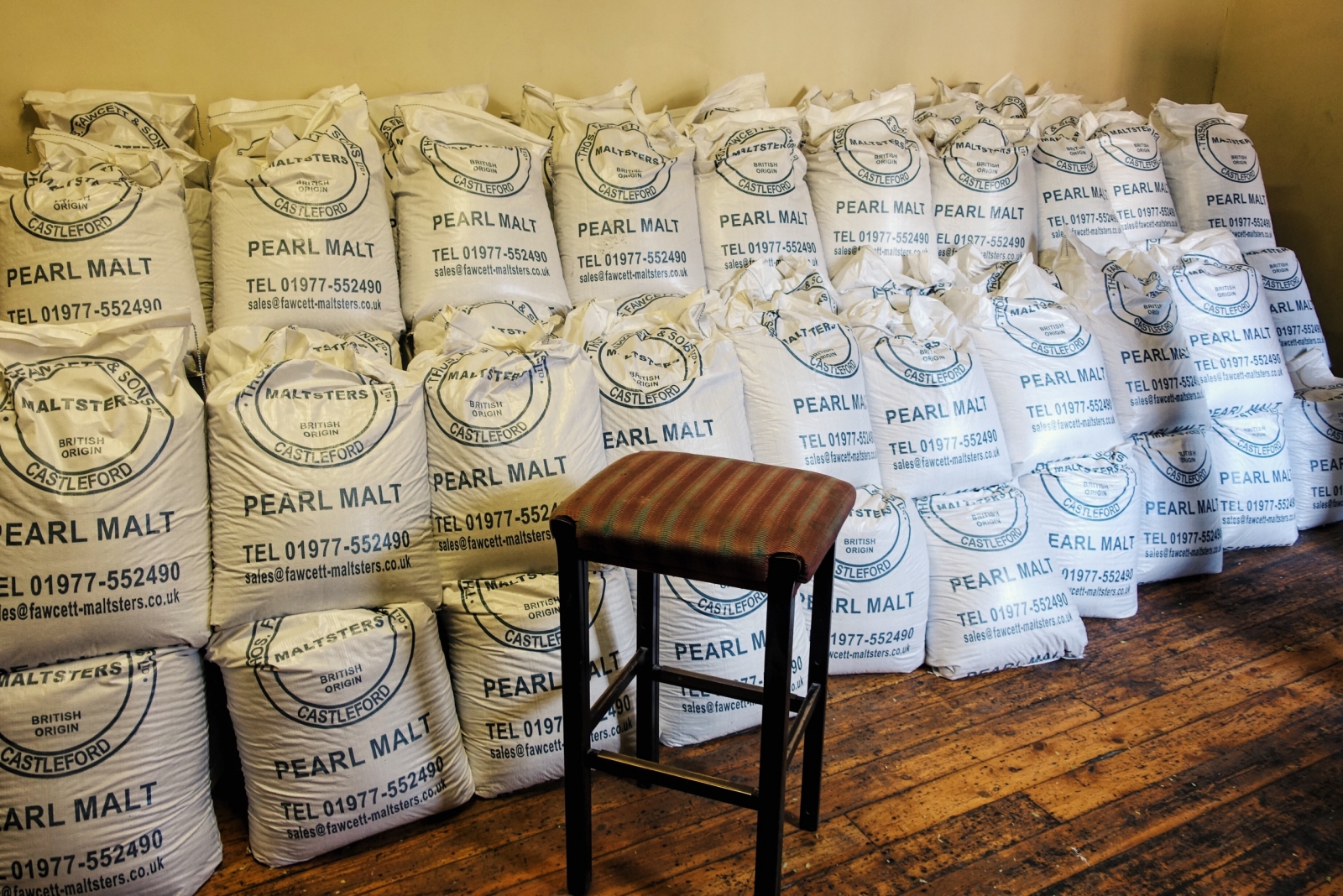
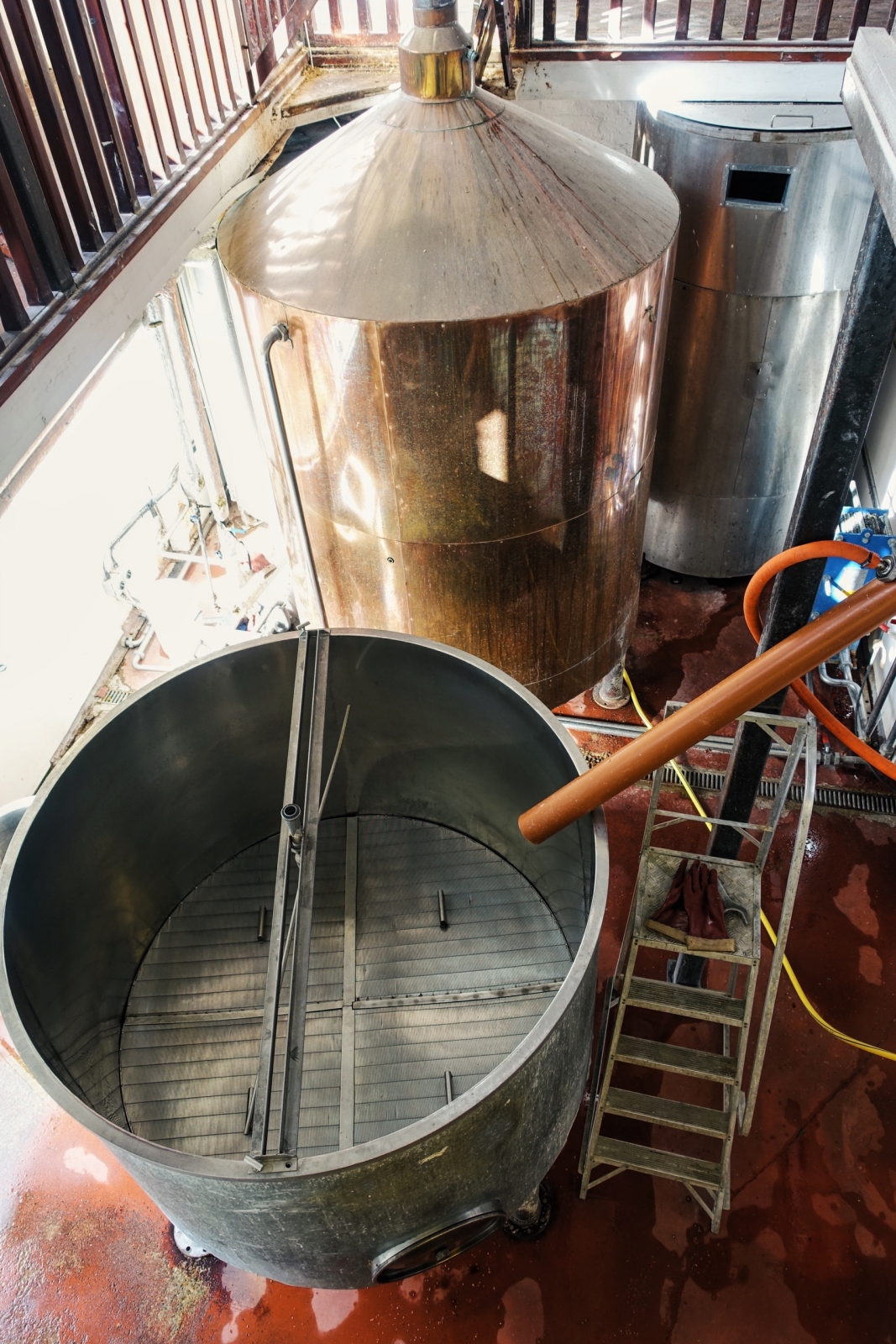
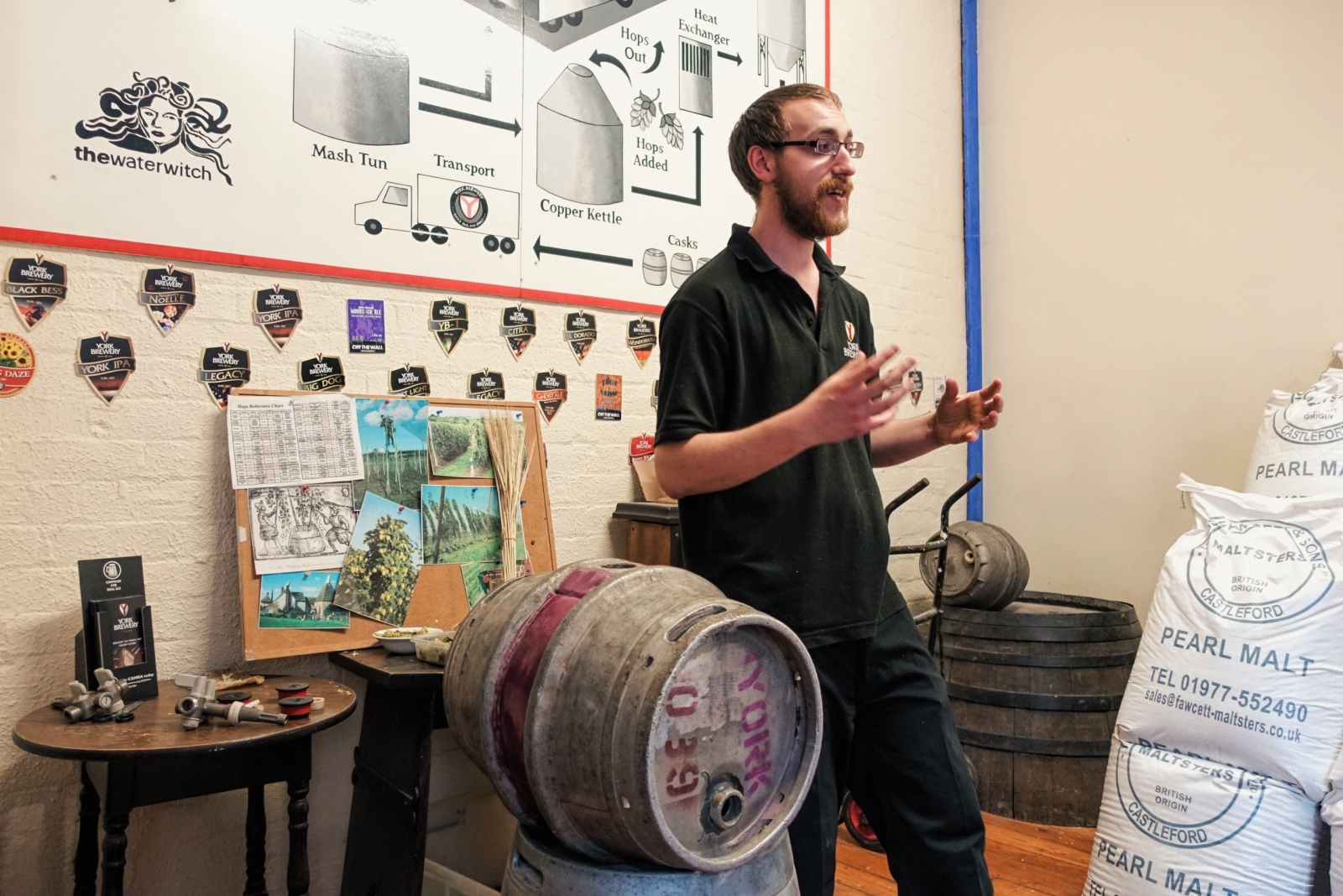
Afterward, we returned to the in-house pub for more drinks. It was a cozy place with tables and chairs in addition to the bar seating. The tour fee of £8 per person included four half-pints or two full pints of beer per person. All of the beers were made in their brewery. It was definitely good value for money.
I personally just sipped from N-’s beers, not being a huge beer drinker myself. We gave my tokens to a couple at a nearby table, who were very happy to get free beer.
Dinner at York Roast
We went to York Roast on the Shambles for some roast pork sandwiches. The pork was tender and had crispy skin. Although it wasn’t as good as the roast pork sandwich I had at Borough Market, it was definitely just the kind of meaty dish you’d want after touring a brewery.

We ordered a side of cracklings for good measure. We were surprised to get a whole 12-oz cup of crispy pork bits. There was crispy skin, crispy fat, and some crispy flesh—the whole shebang. It couldn’t have been healthy. How could something so wrong feel so right?

Clifford’s Tower
By this time of day, the Shambles was once again blessedly empty, and it was a pleasant walk back. We stopped by Clifford’s Tower, the largest remaining portion of York Castle and one of York’s most popular landmarks.
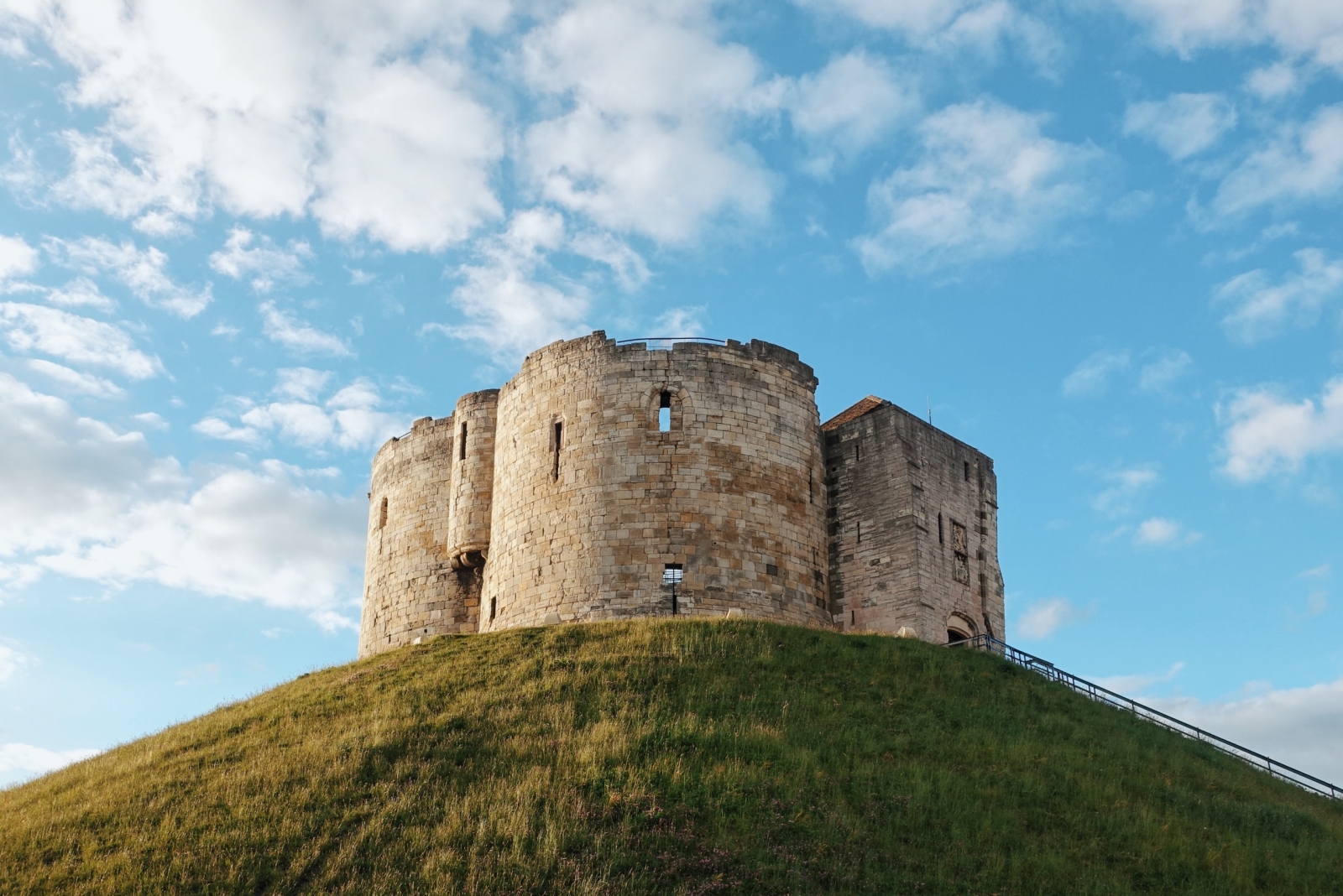
Then we returned to the hotel, where we had to pack for our train ride to Edinburgh the next day. That marked the end of our two-day trip to York.
Why York?
When I was planning our UK trip, I decided to allot most of our days to London and Edinburgh. So for our third destination, I looked for a city we could spend two or three days in. York stood out as a good candidate: it had enough things to see and do, but not so many that two full days would feel too short. It also had the practical advantage of being right between London and Edinburgh, which we were flying into and out of respectively. Taking the train from London to York to Edinburgh was the perfect plan.
York had a small-town feel, but it had all the amenities you look for in a city, such as hotels, cabs, and convenience stores. I also noticed that everything cost less here than in London. We had a full English breakfast for £3 per person, a ghost tour for £4 per person, and a brewery tour (including four half-pints of beer) for £8 per person.
After the lost luggage and train strike hullabaloo we experienced in London, not to mention the endless throngs of people there, York was such a relaxing experience. It was enjoyable simply to walk around the city appreciating its old architecture—not grand for the most part, but cozy and lived in. In York’s quiet streets and snickelways, we felt as far away from big city life as we could.
All in all, we had a wonderful two days in York. We were able to see and do a lot, but it didn’t feel like it. If that isn’t the perfect formula for a holiday, I don’t know what is.
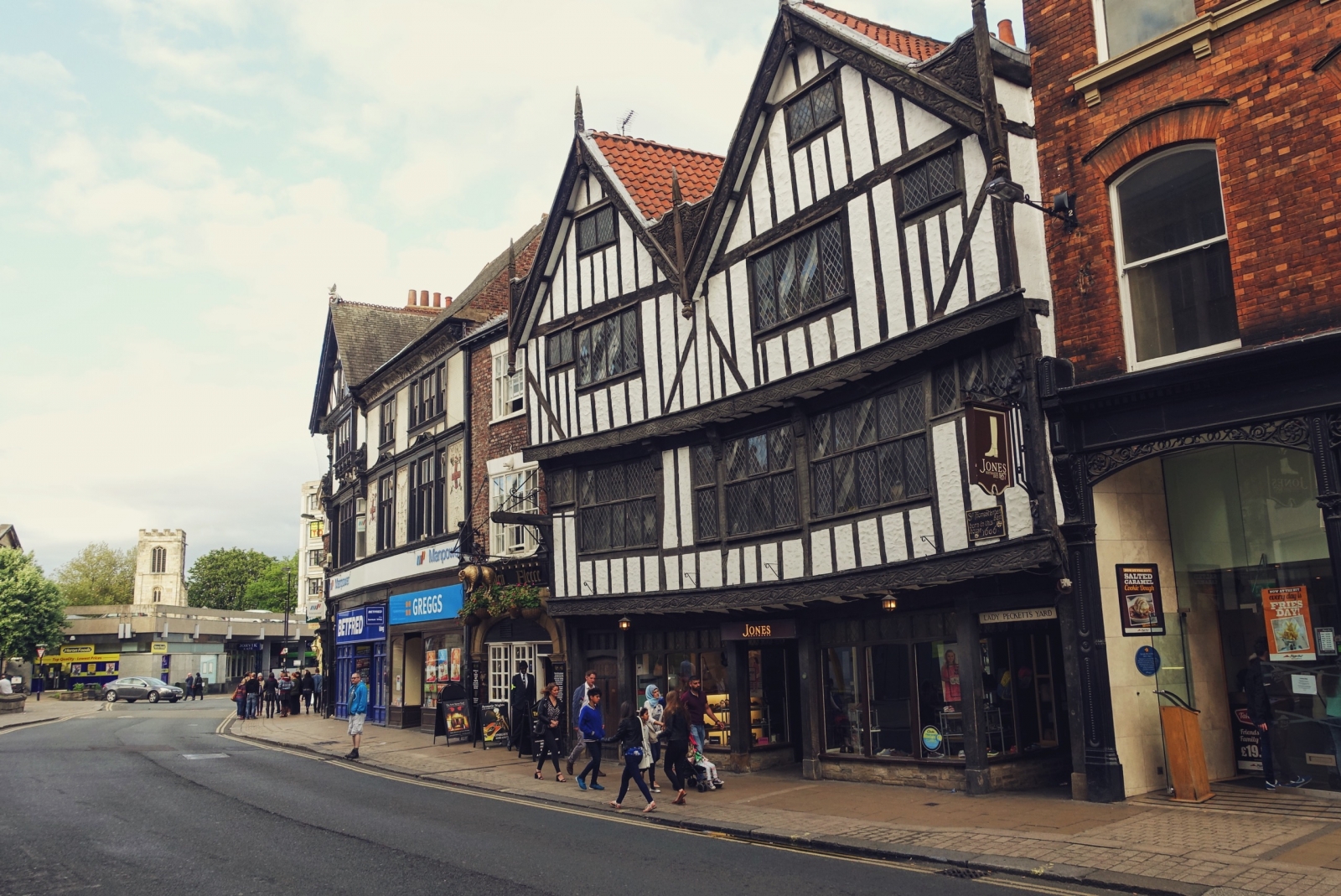
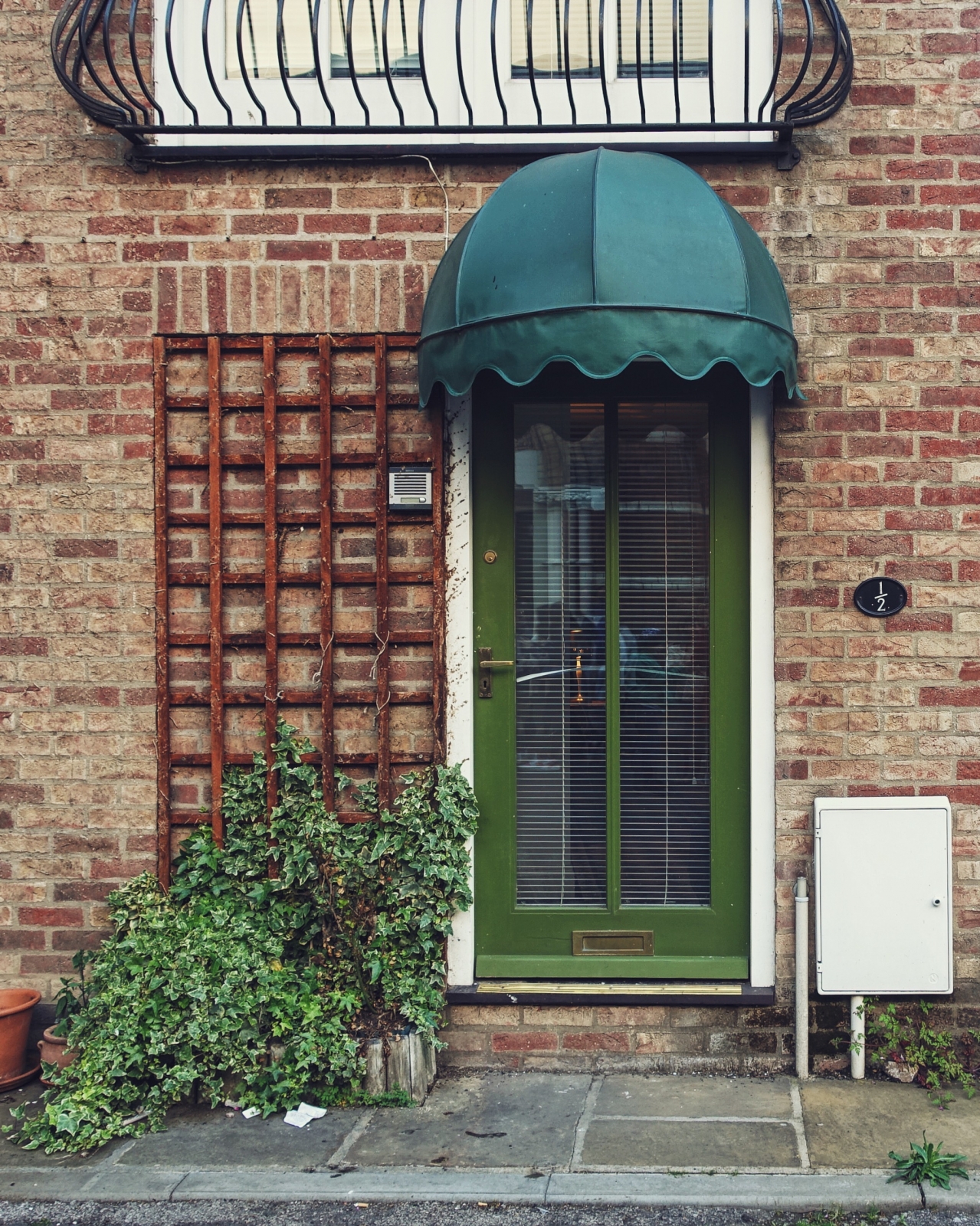
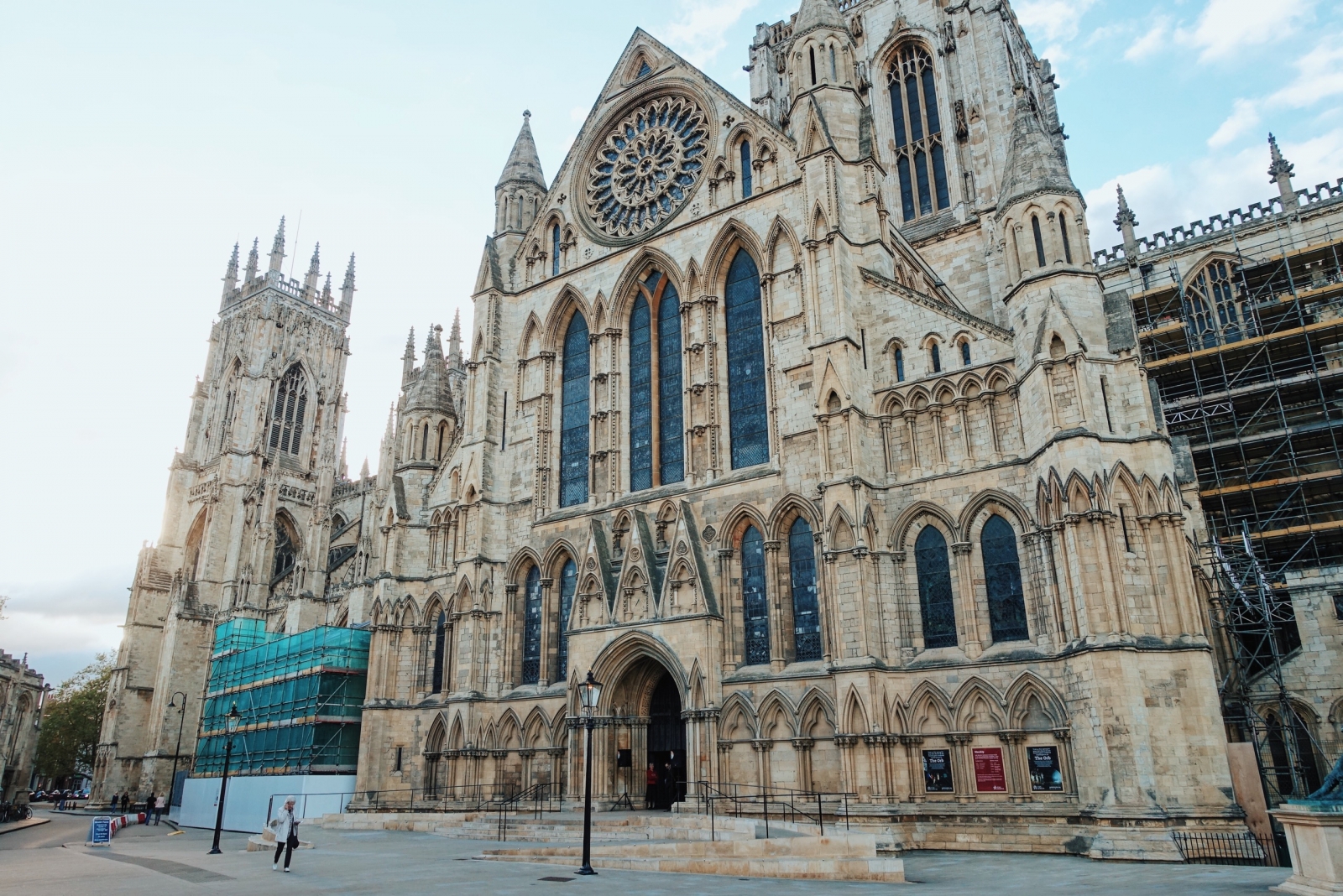
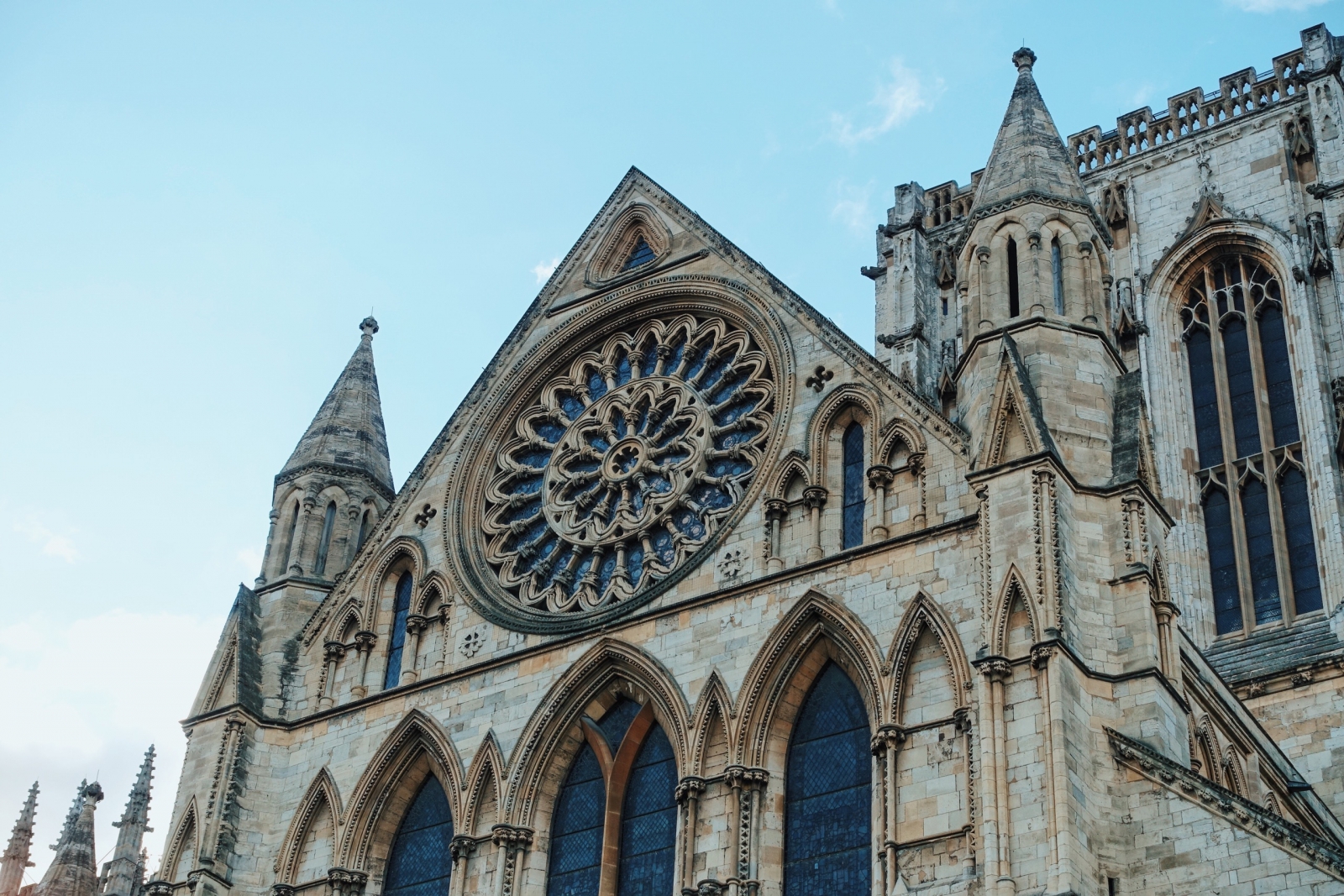
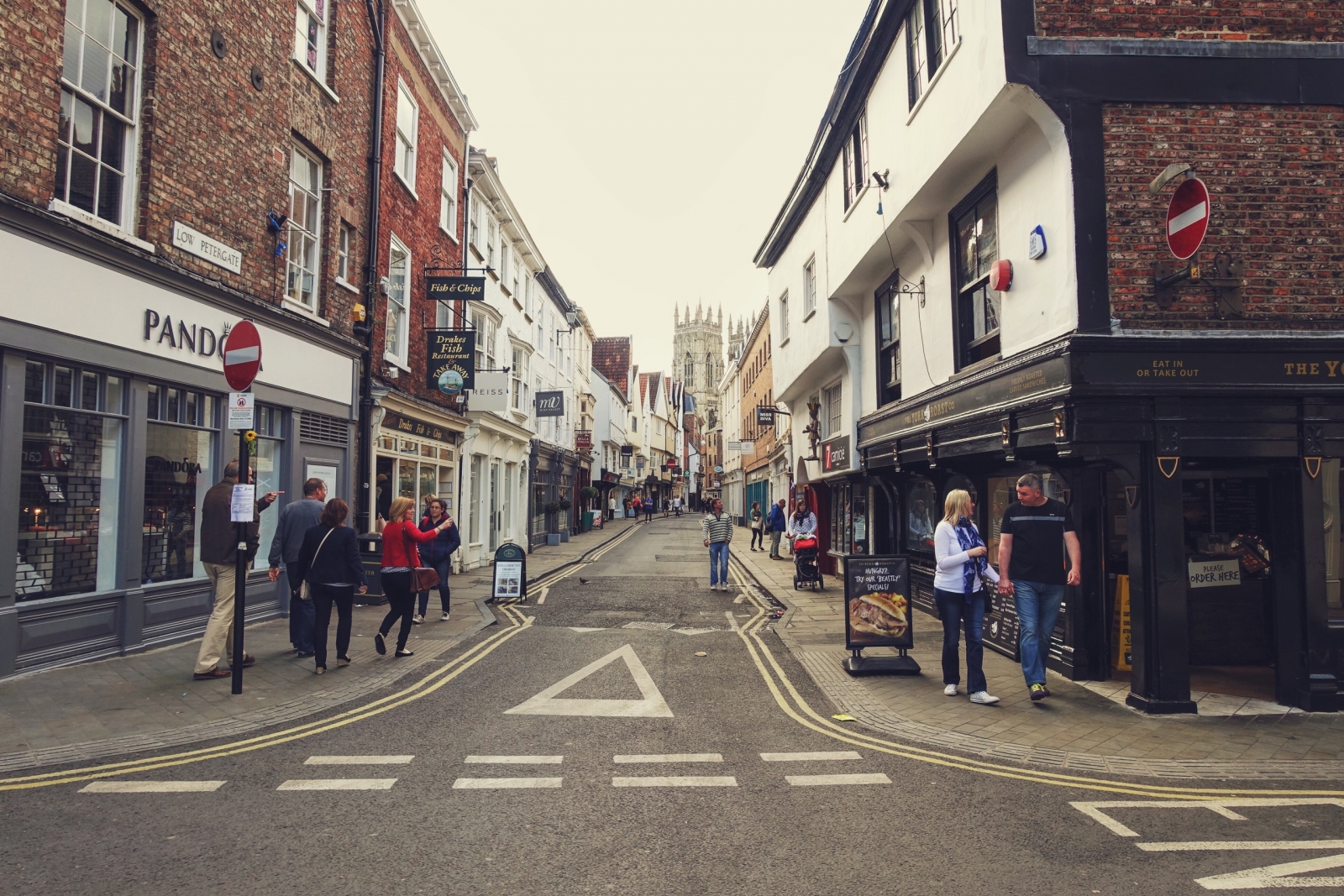



Practical Information
Getting to York
We took a 1h 46m train from London to York. Other options are discussed here.
Getting Around
To accommodate our luggage, we took taxis from the train station to the hotel and vice versa. We took a bus to the National Railway Museum and a tram from the museum back to York Minster. For everything else, we walked. York’s city center is compact and most of the attractions can be reached by foot.
Where We Stayed
We stayed for two nights at Hotel 53, a standard 3-star hotel at a central location. Website / TripAdvisor
Relevant Links
Attractions, Museums, and Landmarks:
- York Castle Museum — Website / Hours and Prices
- National Railway Museum — Website
- Treasurer’s House — Website
- York Brewery — Website / Tour Times and Prices
- Clifford’s Tower — Website / Hours and Prices
Places to Eat:
- Walmgate Ale House — Website / TripAdvisor
- Ambiente — Website / TripAdvisor
- The Postern Gate — Website / TripAdvisor
- Drakes Fish & Chips — TripAdvisor
- York Roast — Website / TripAdvisor